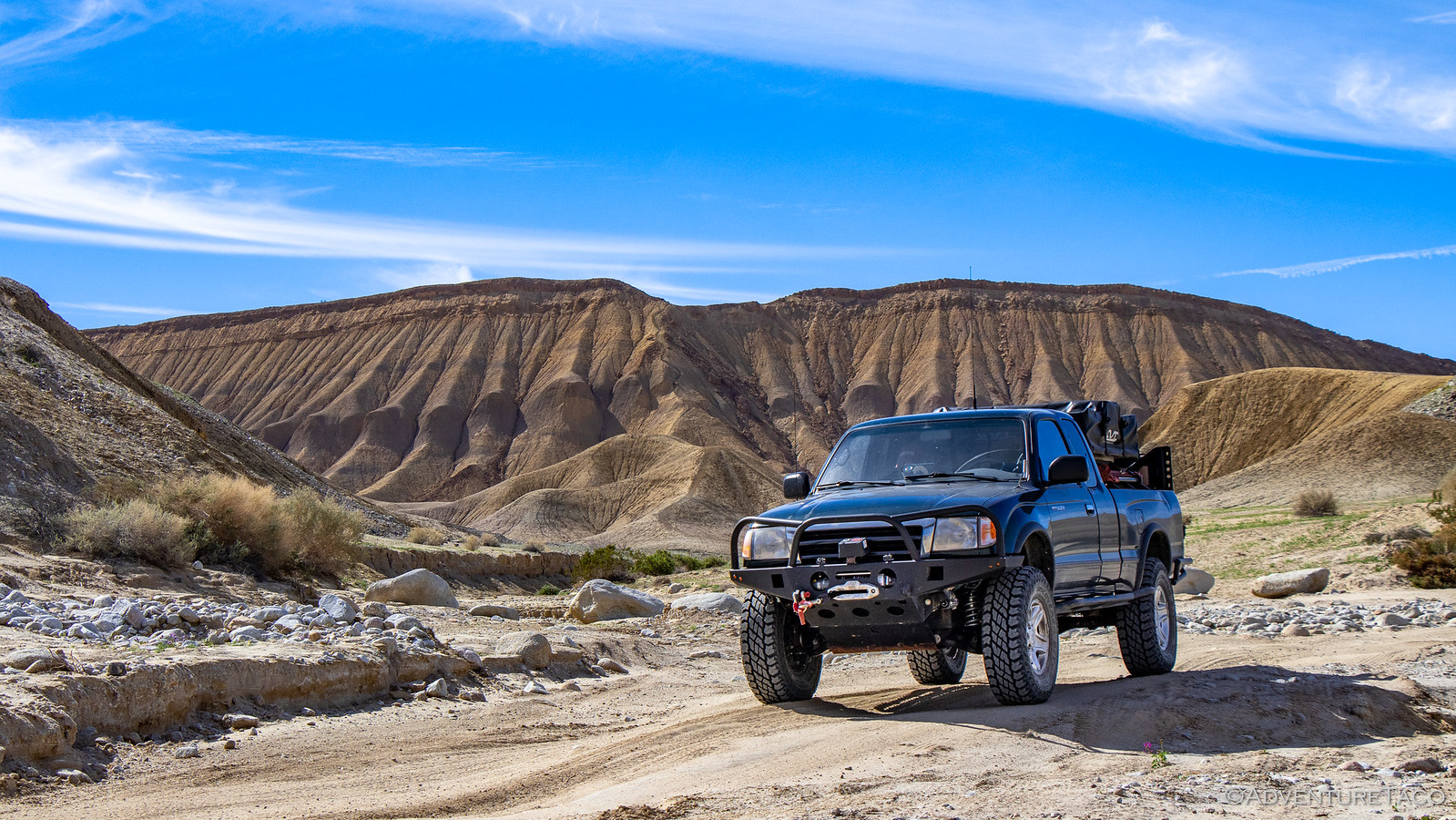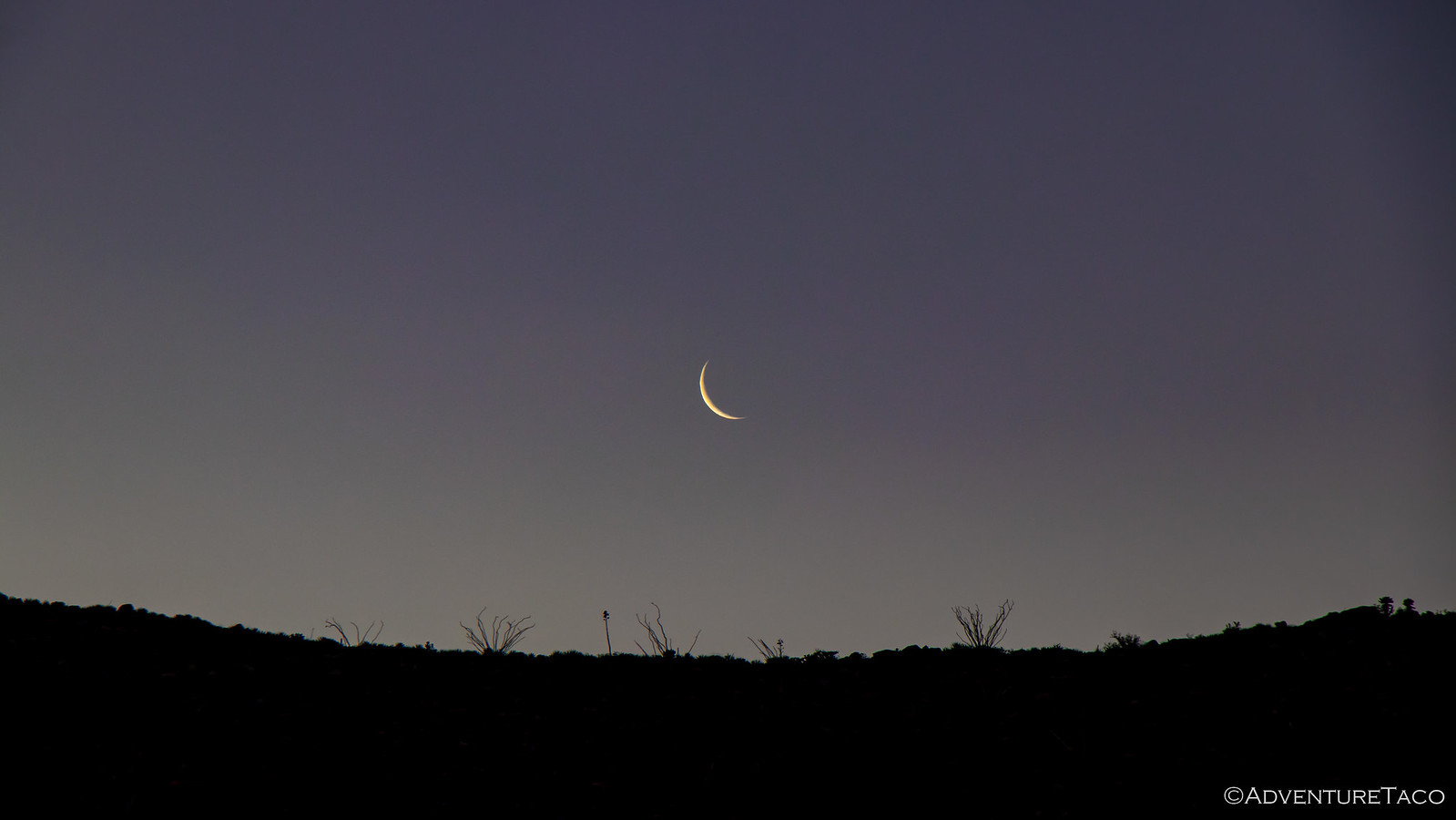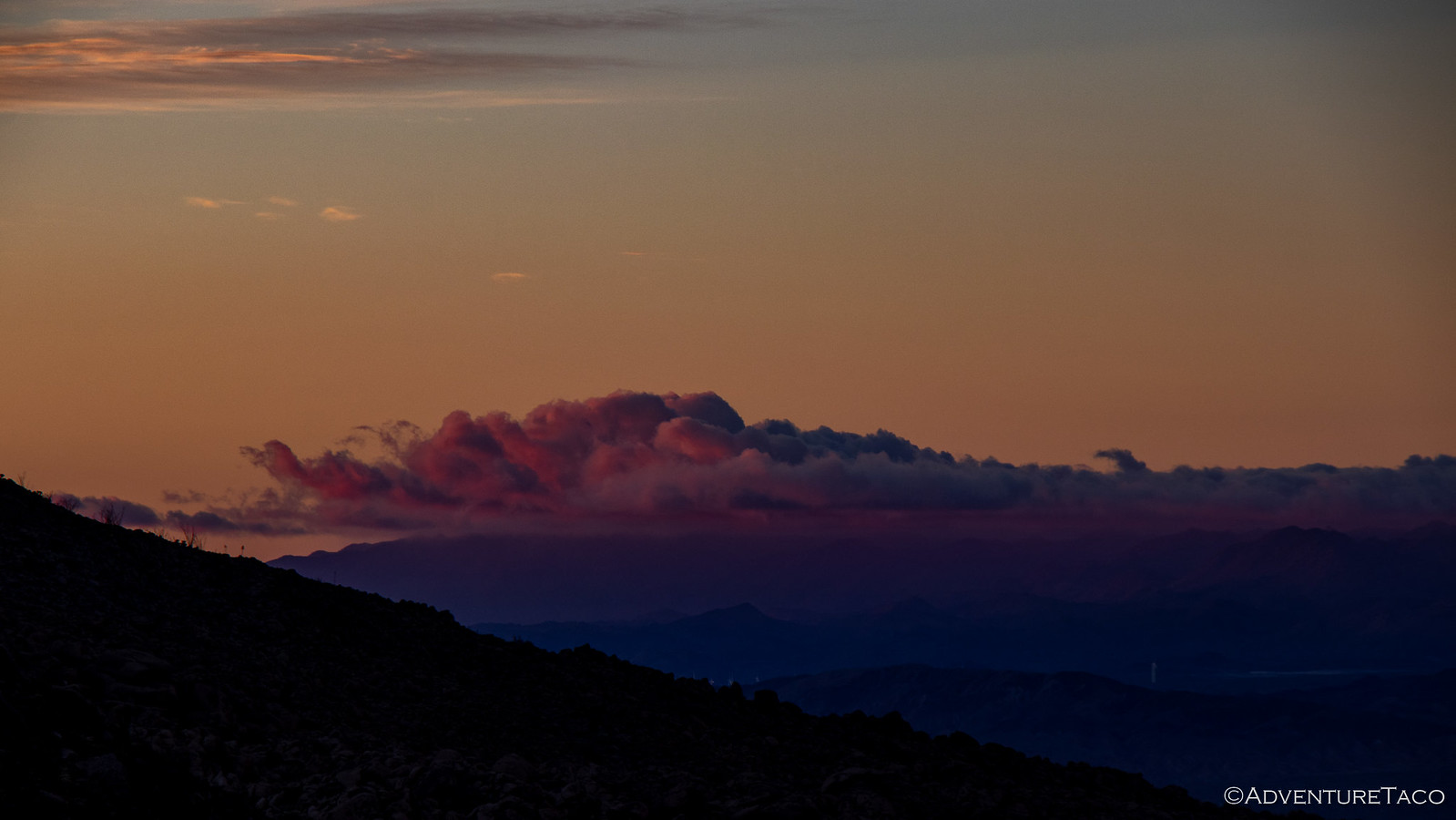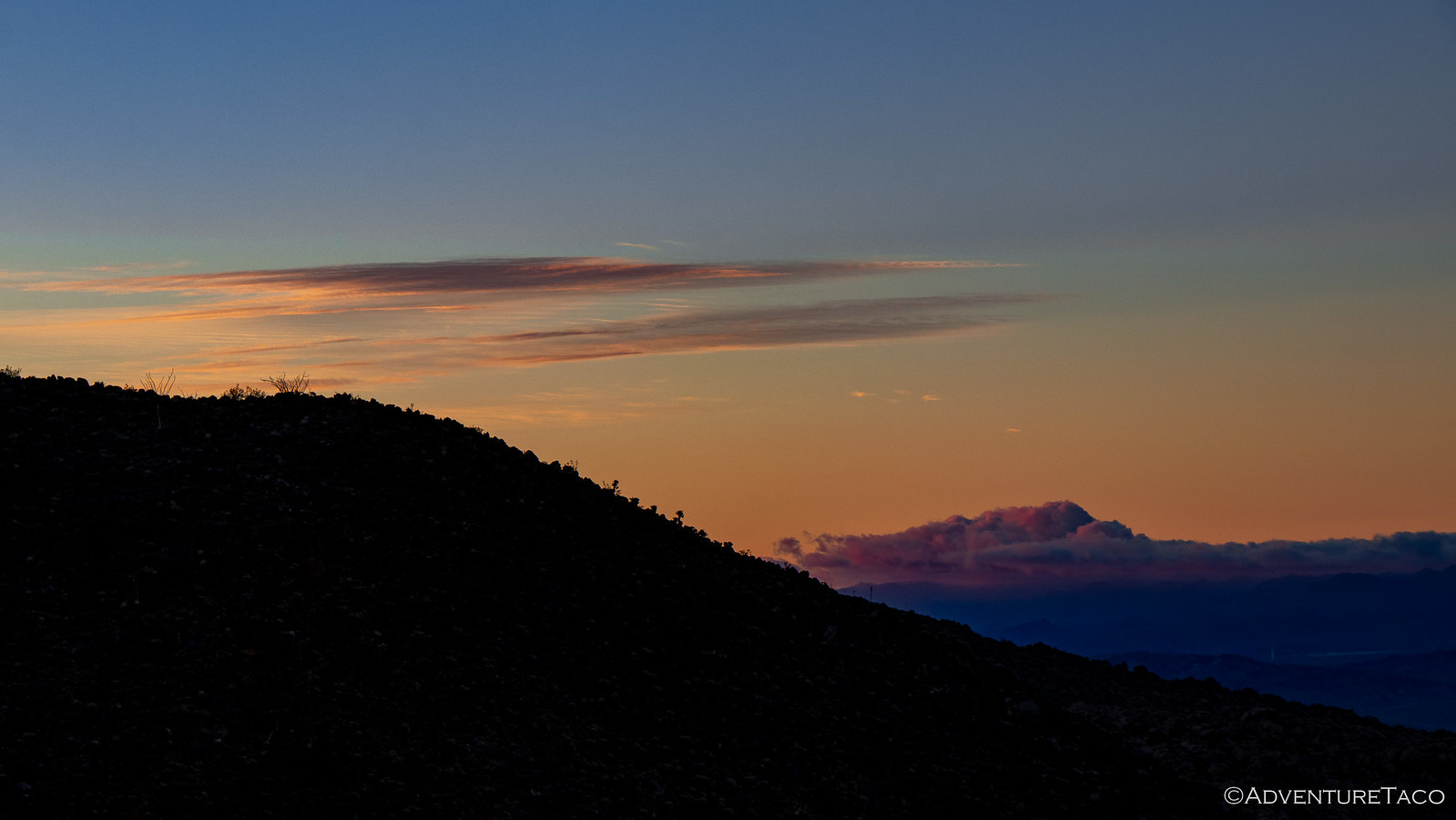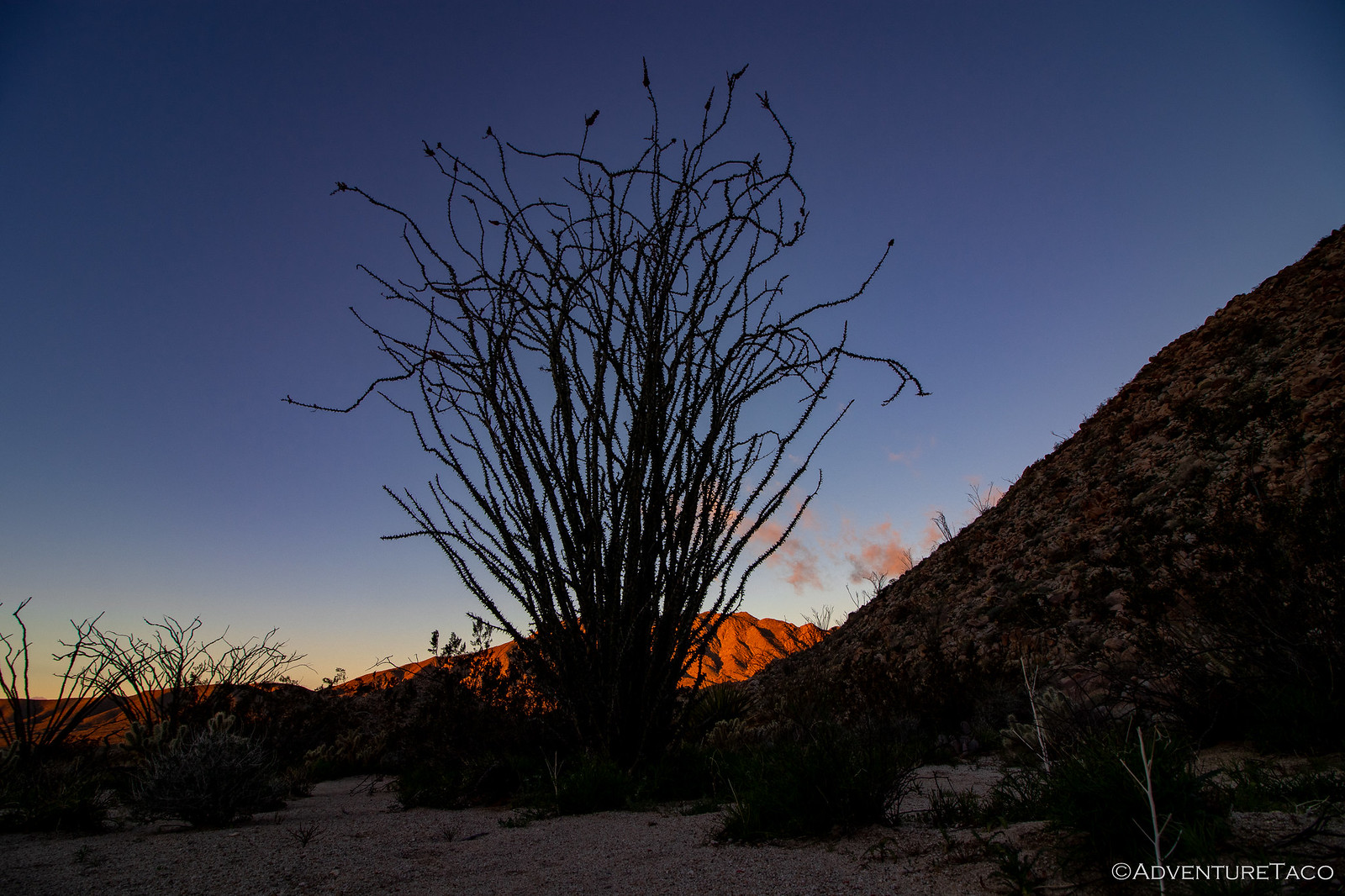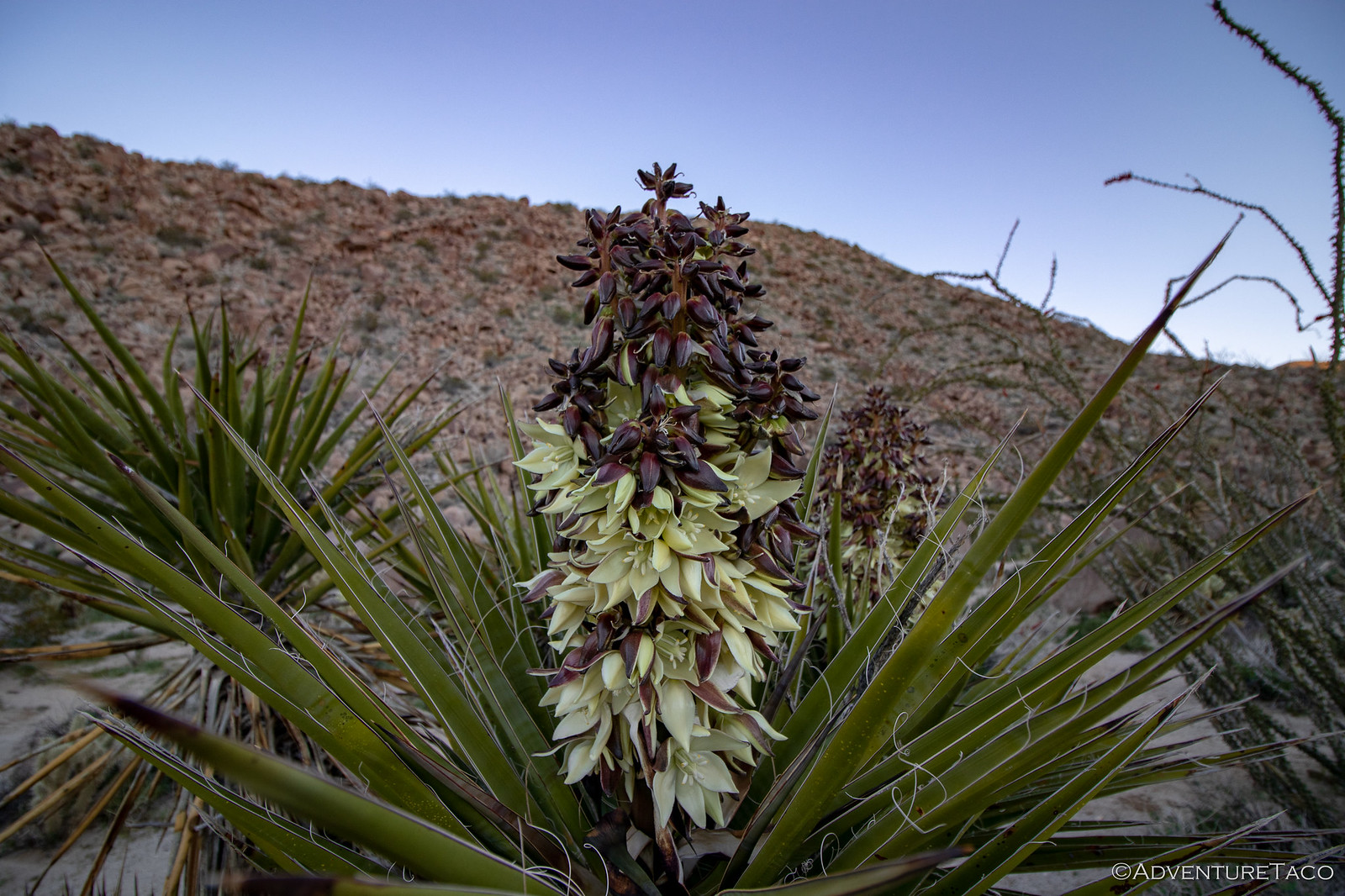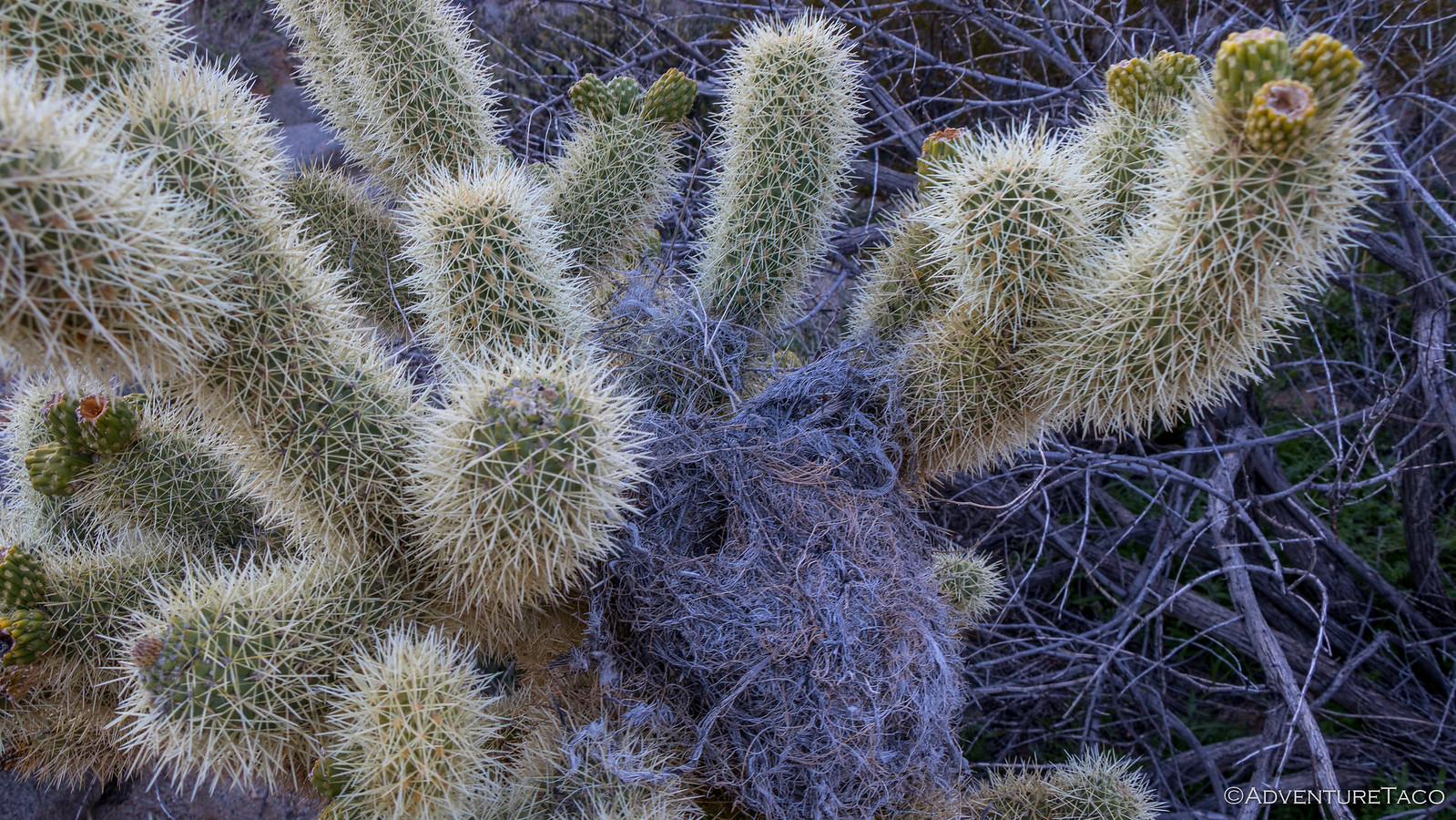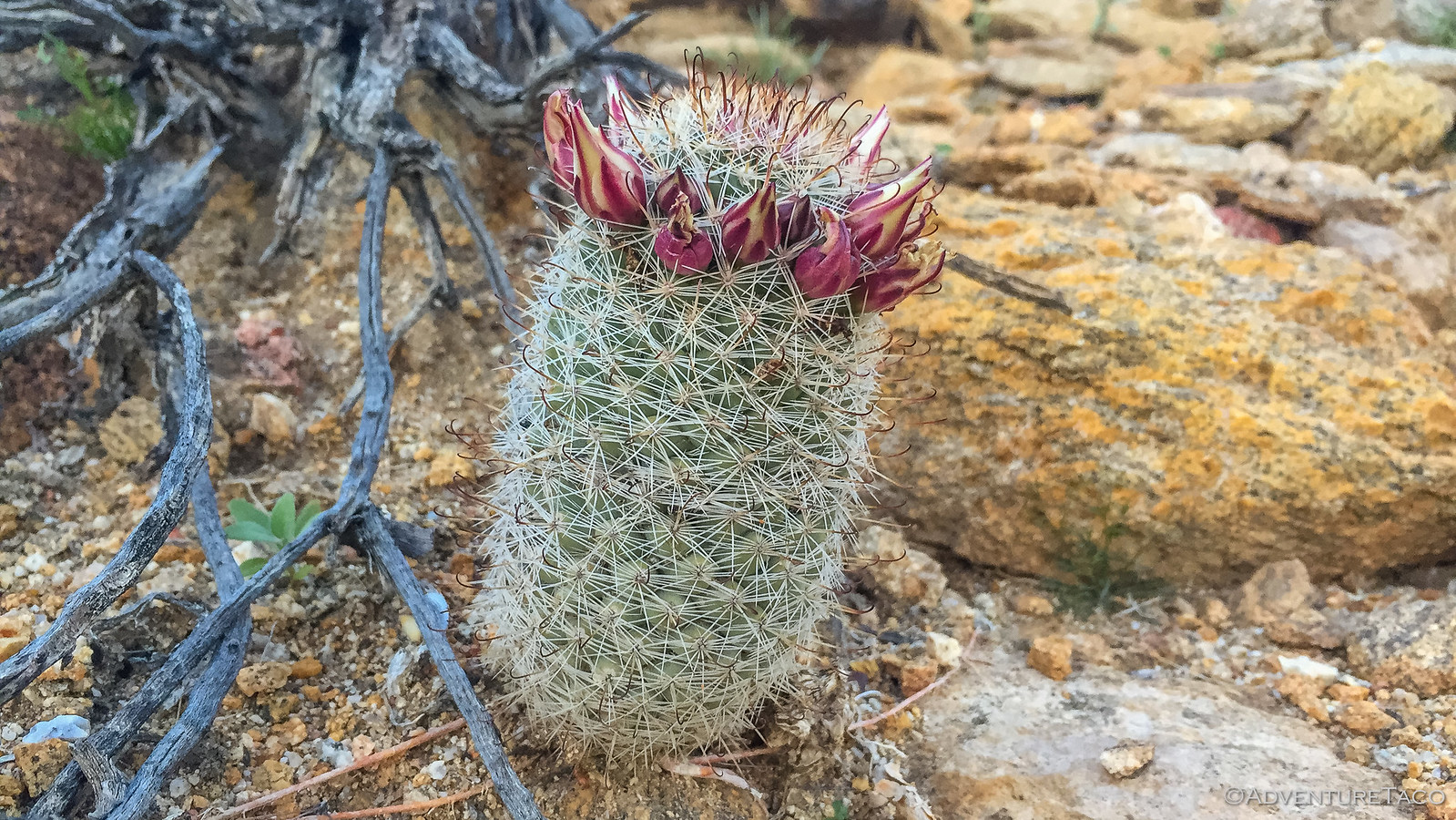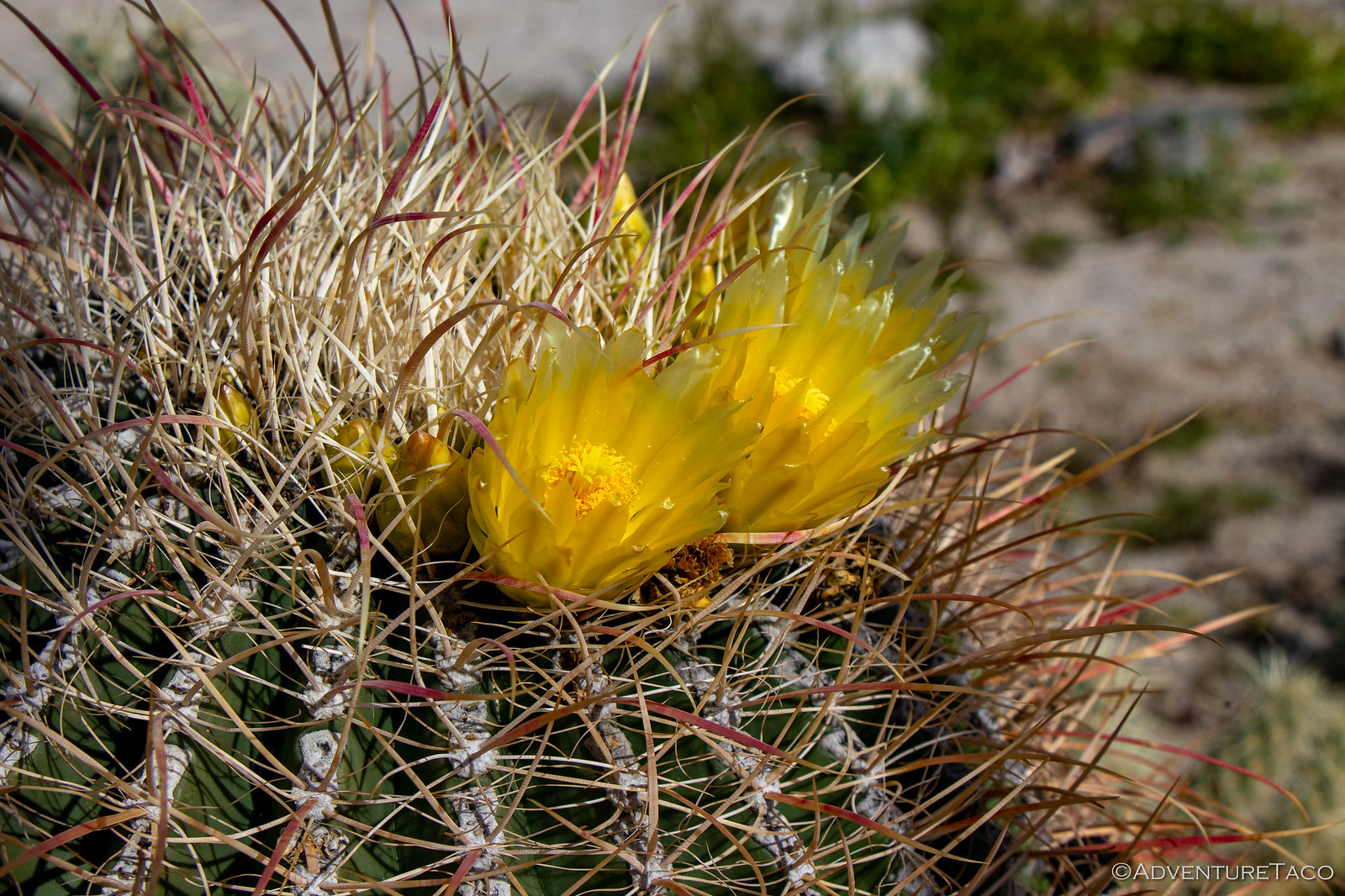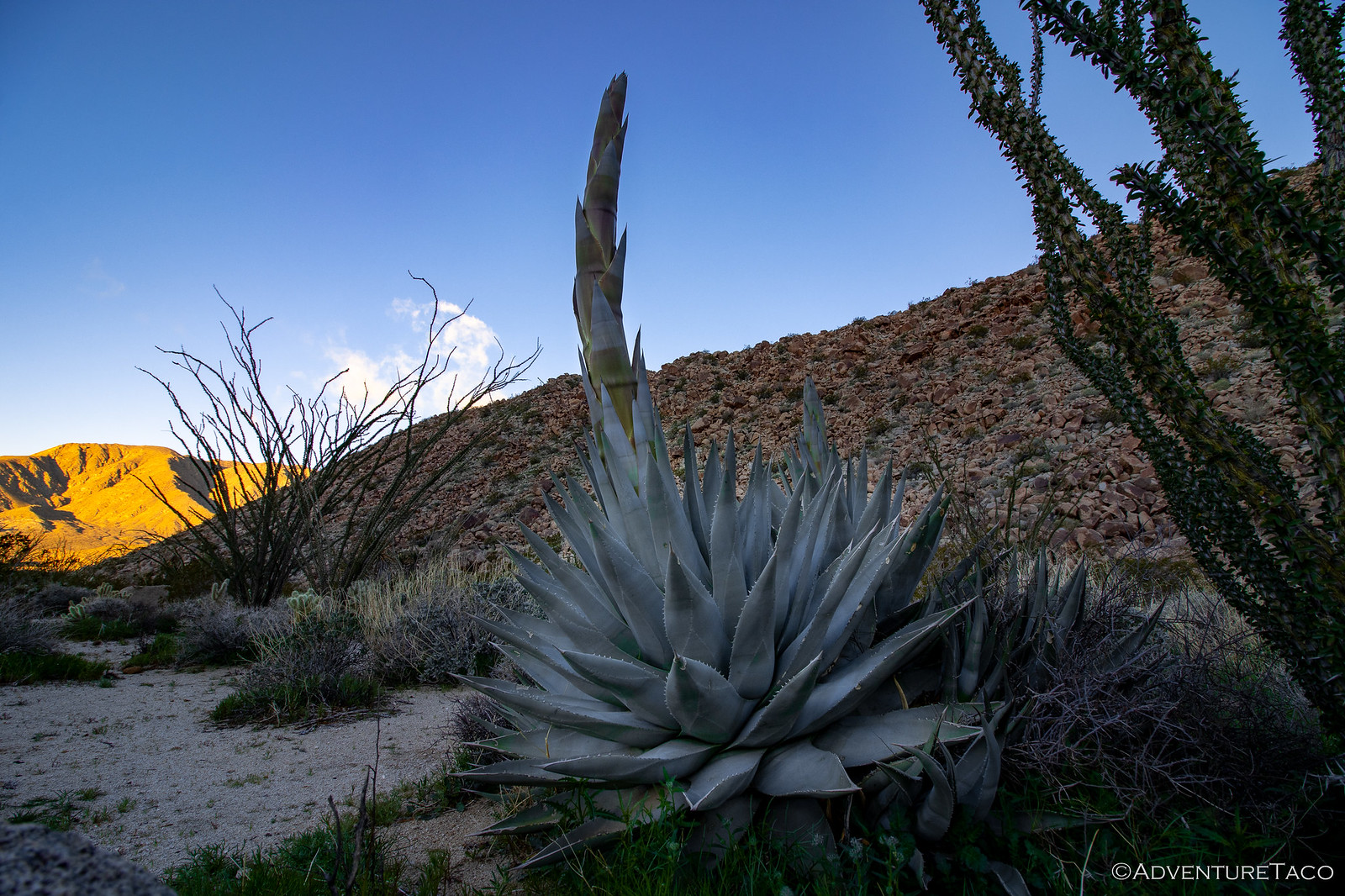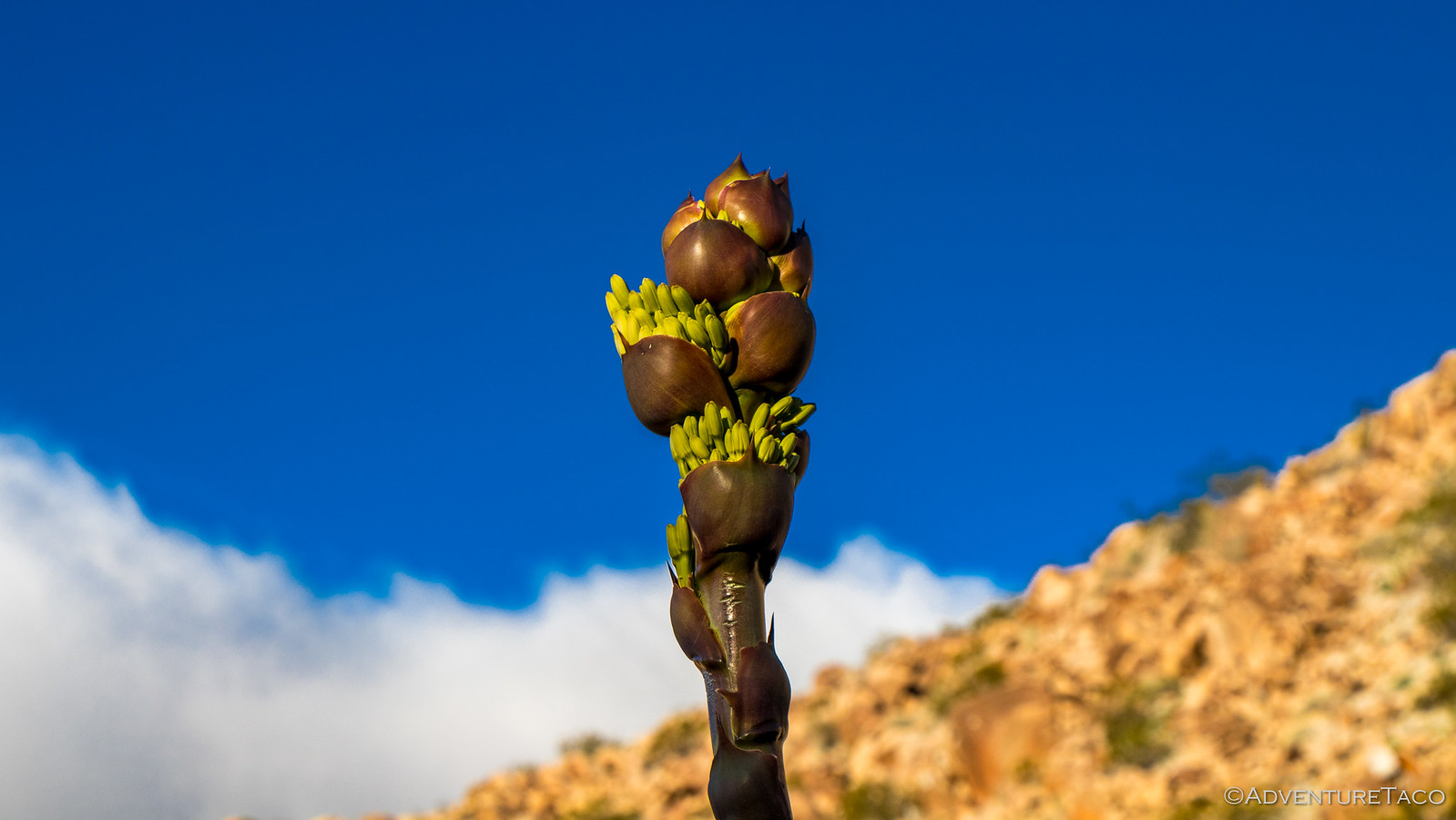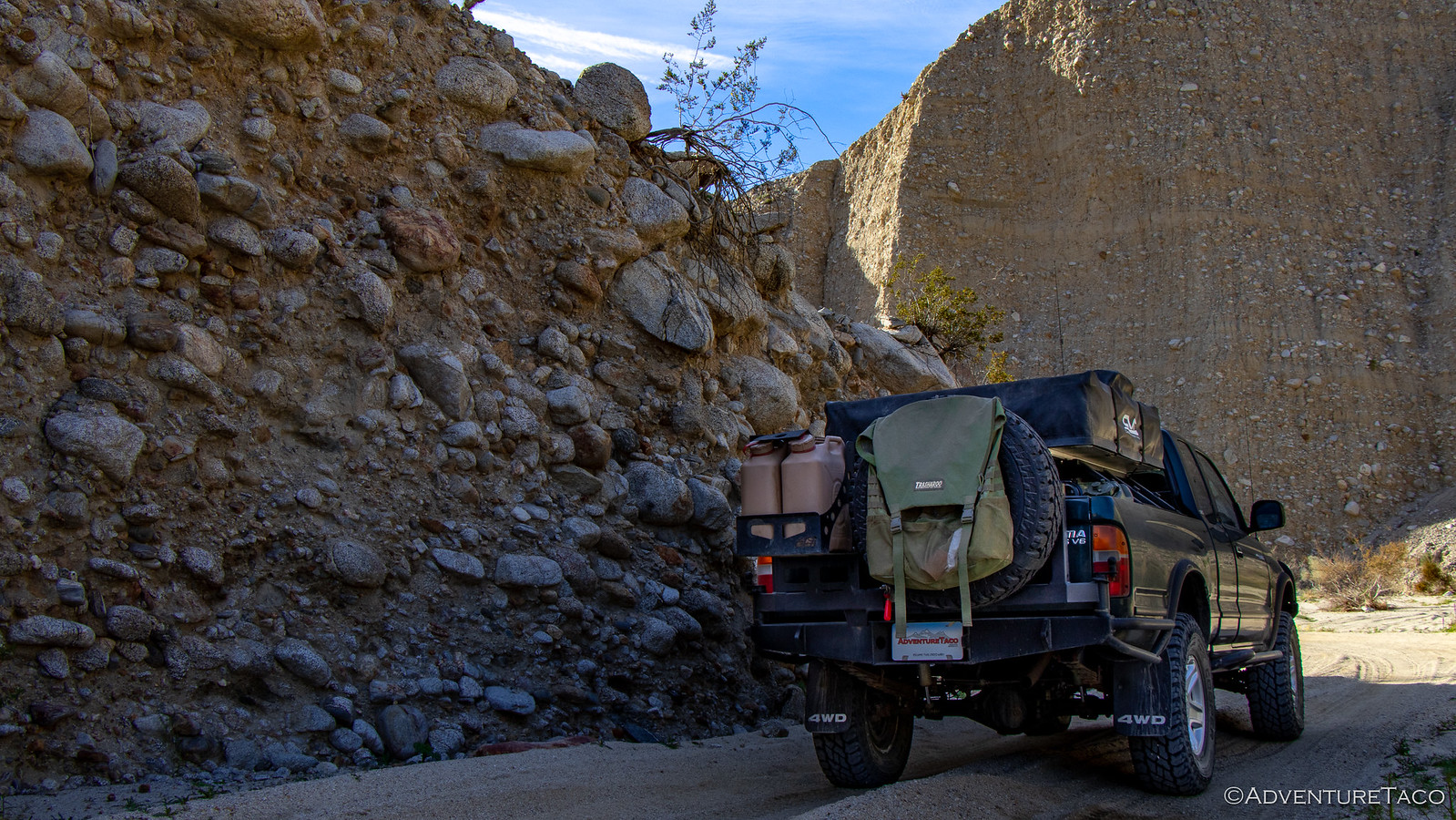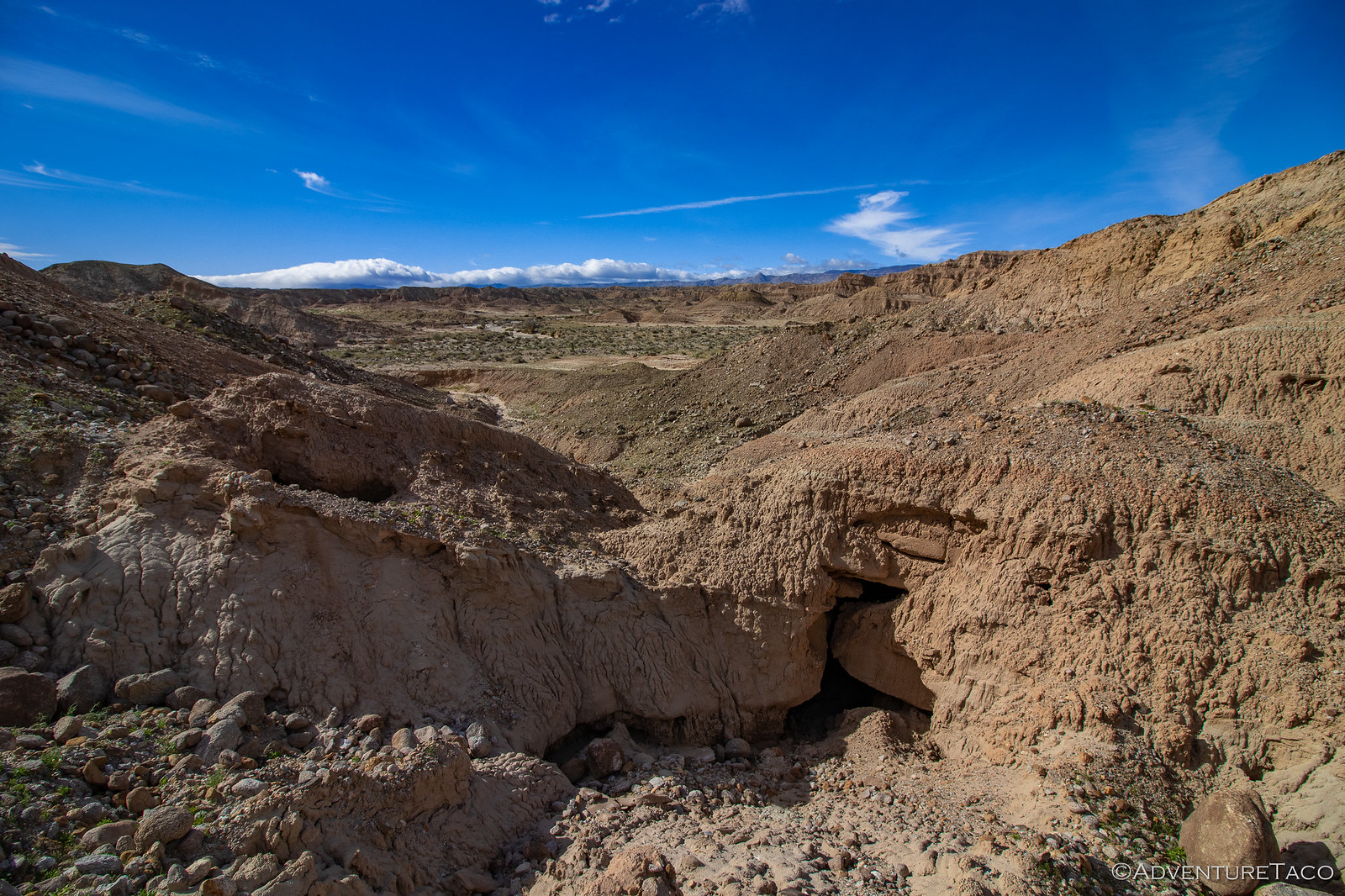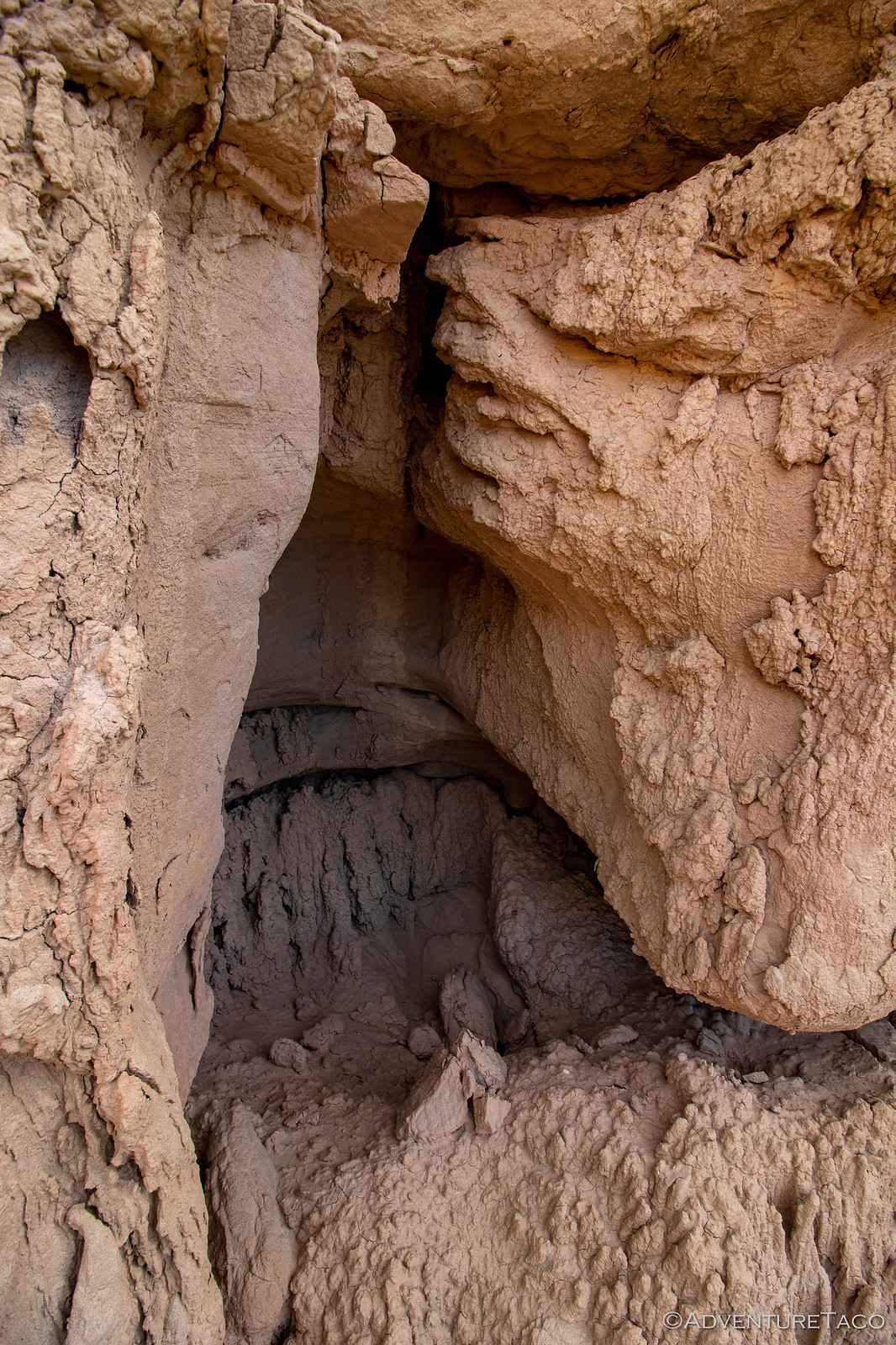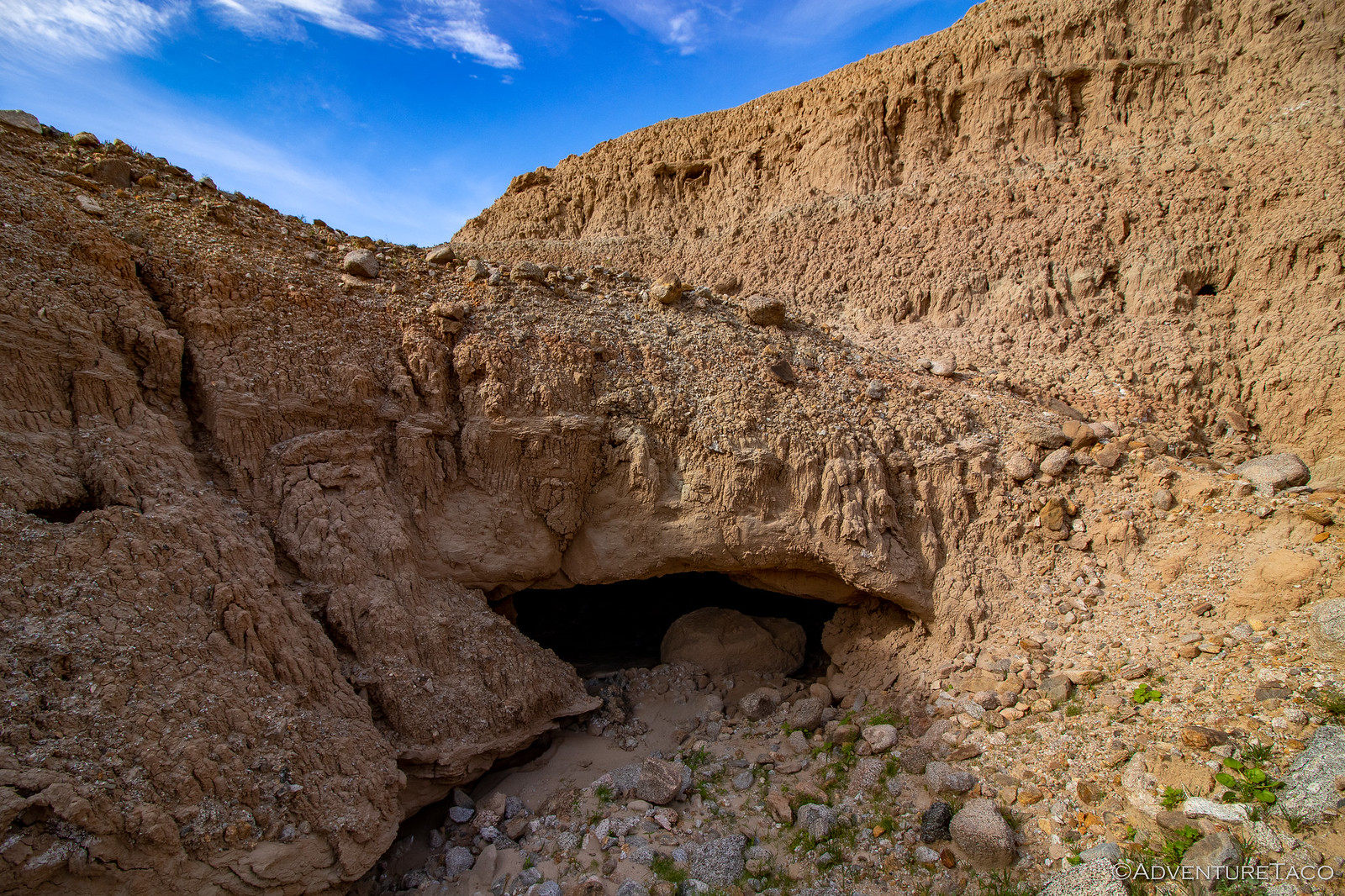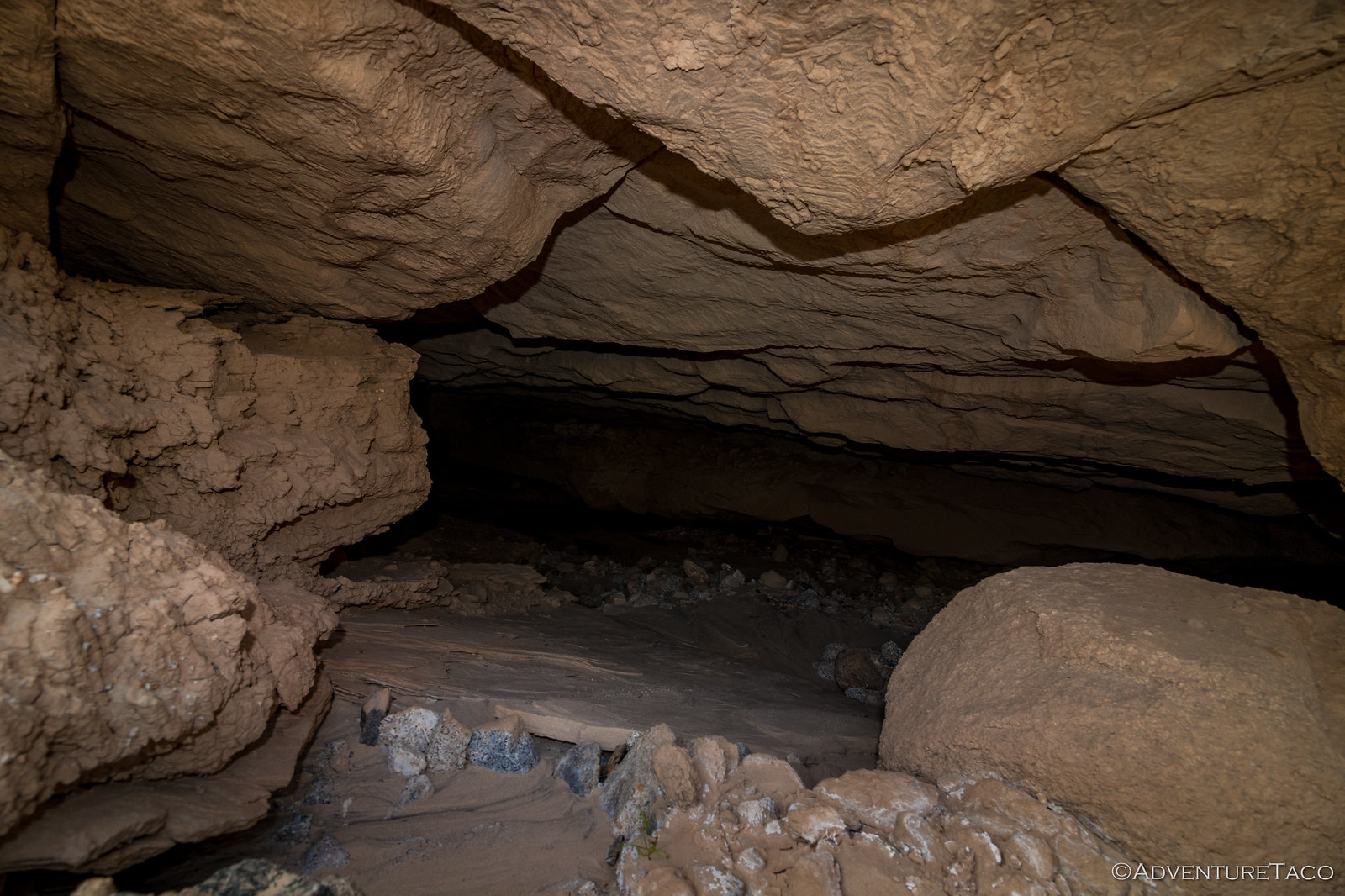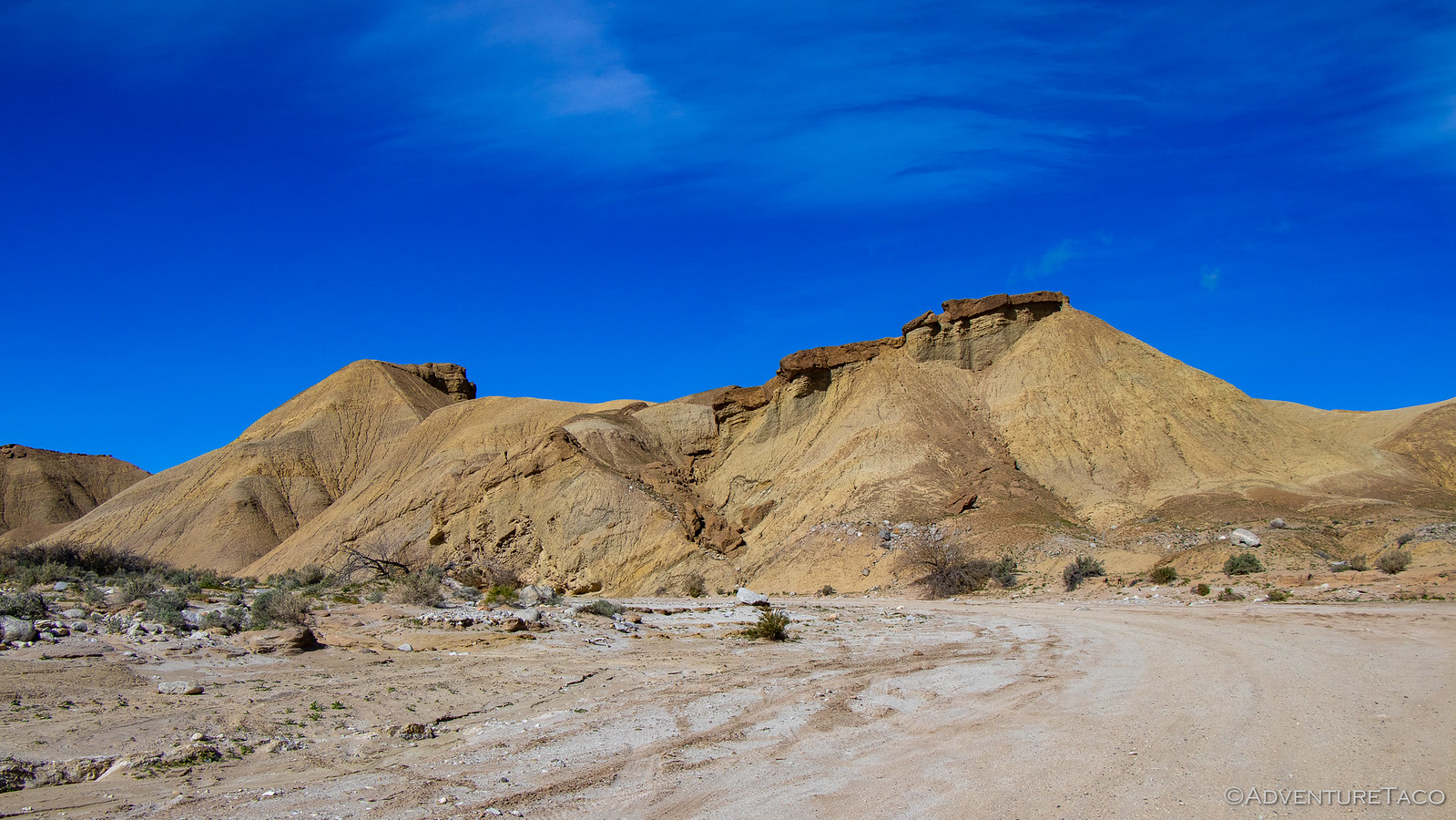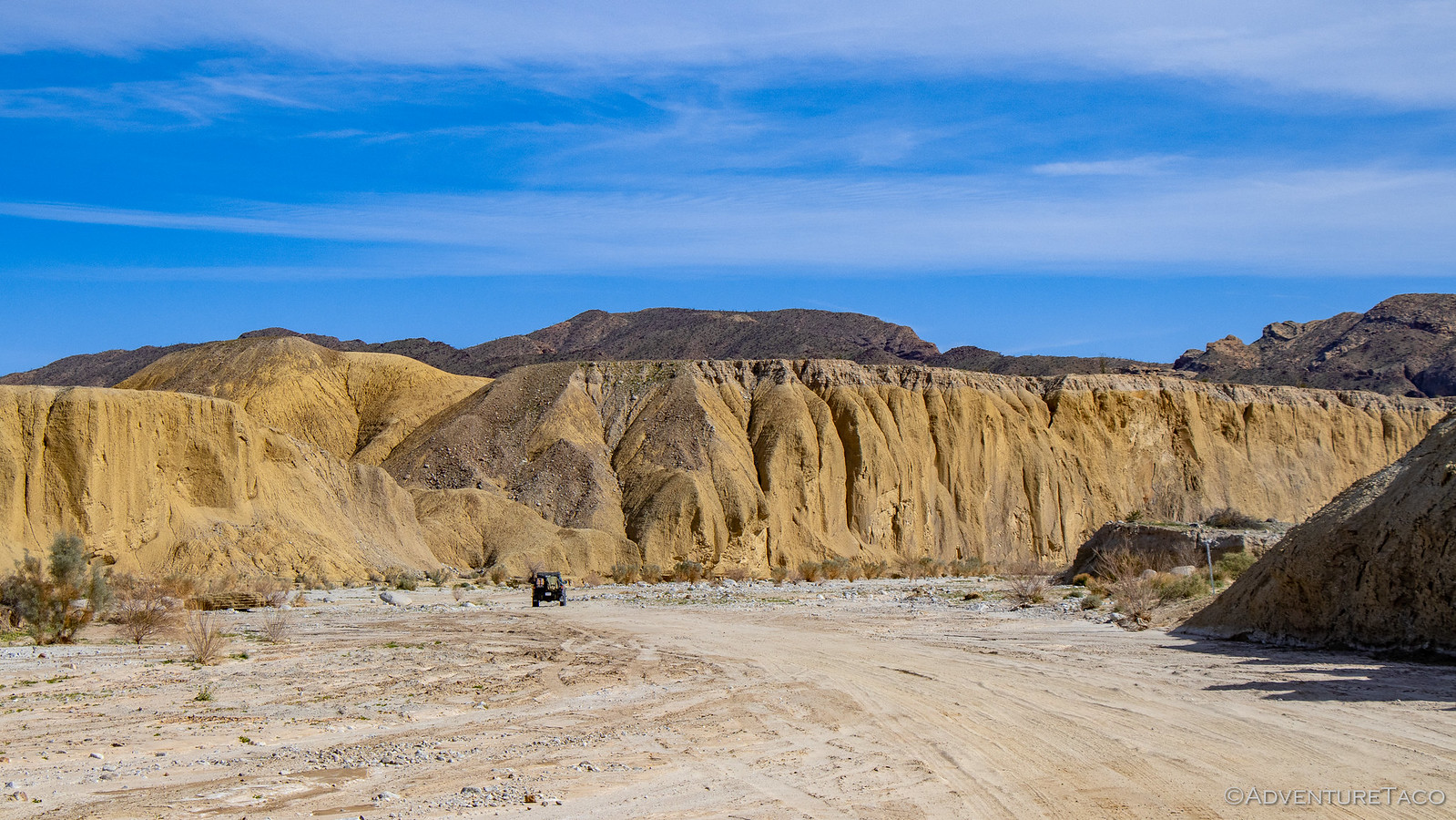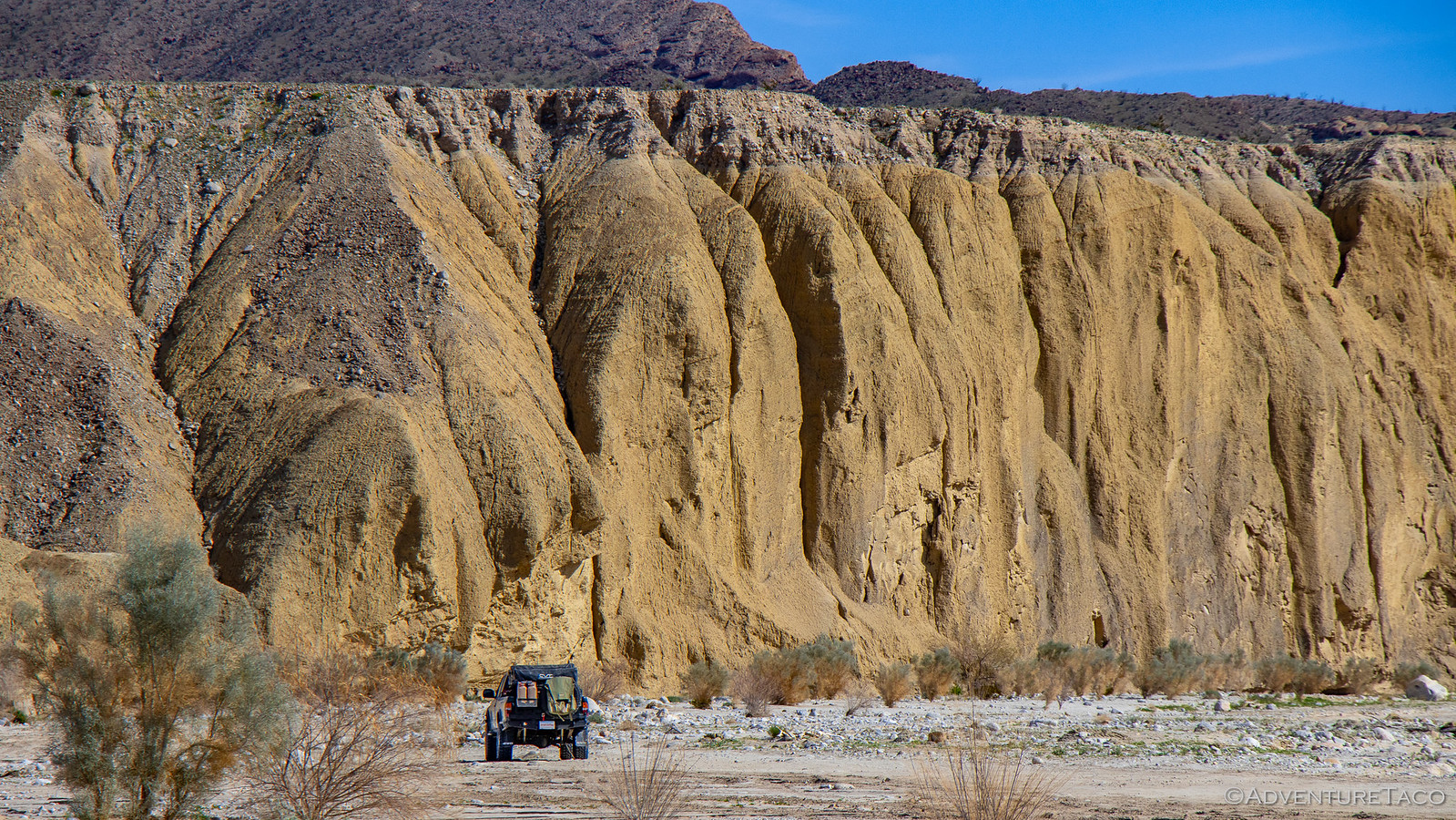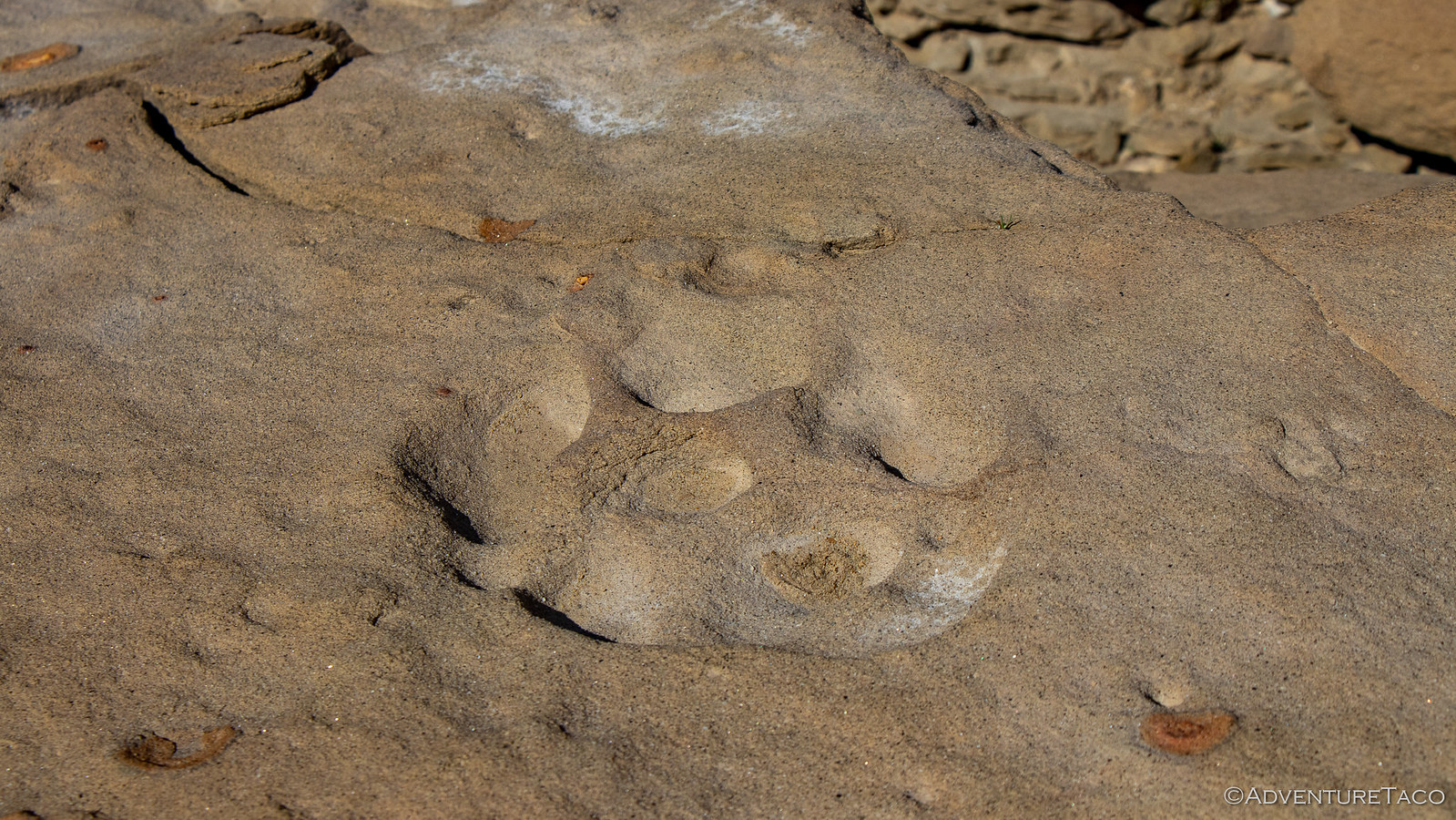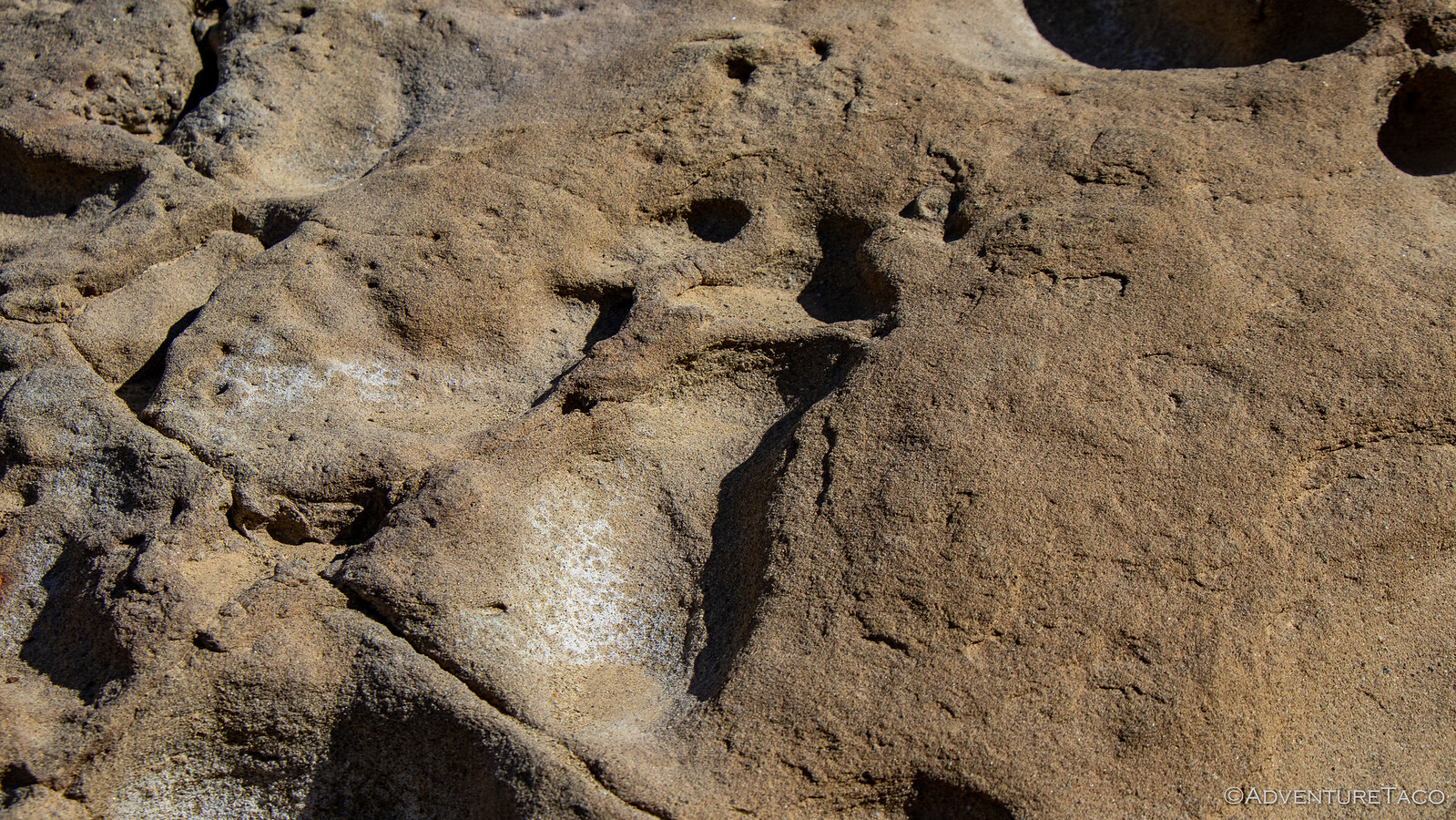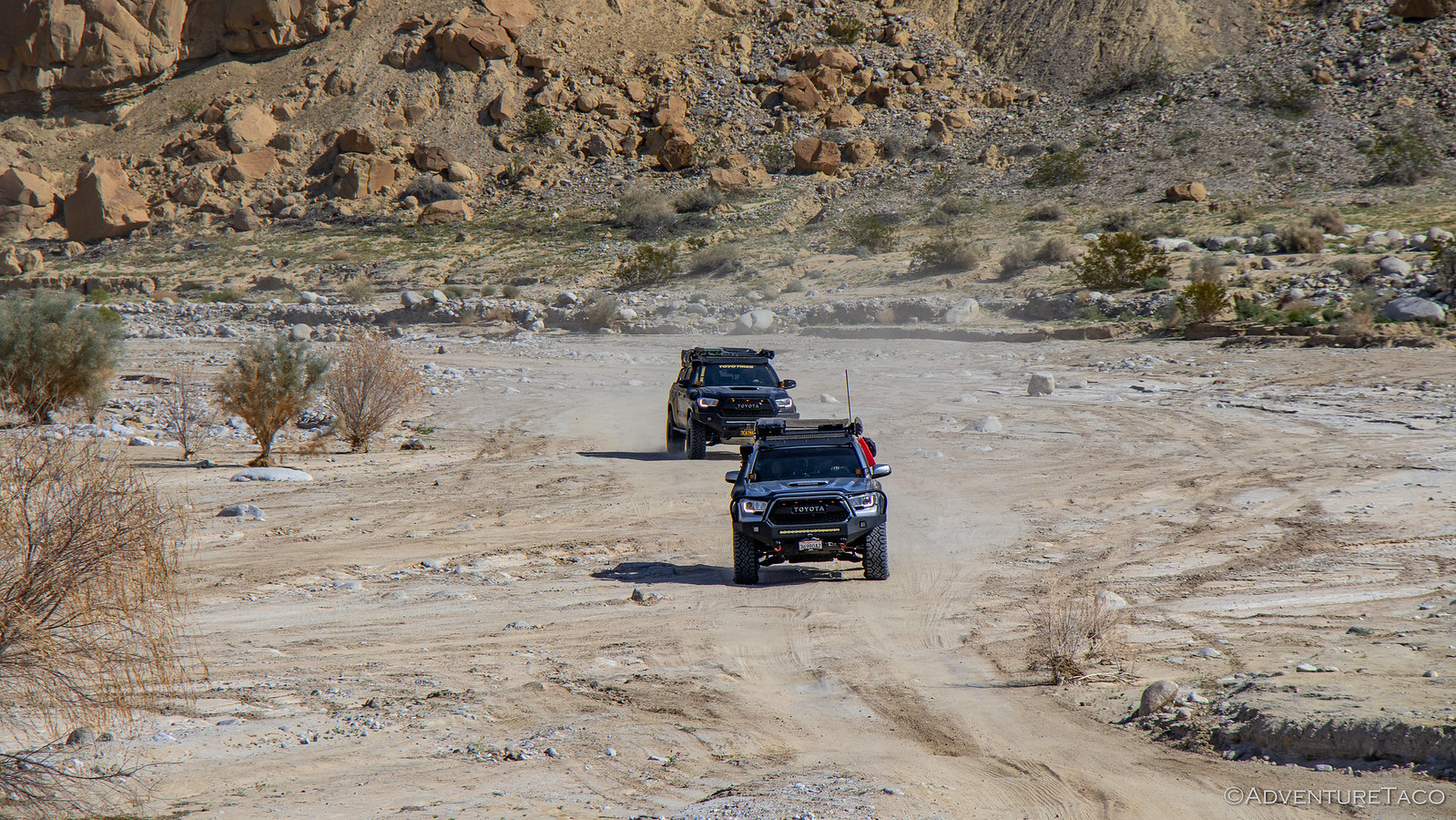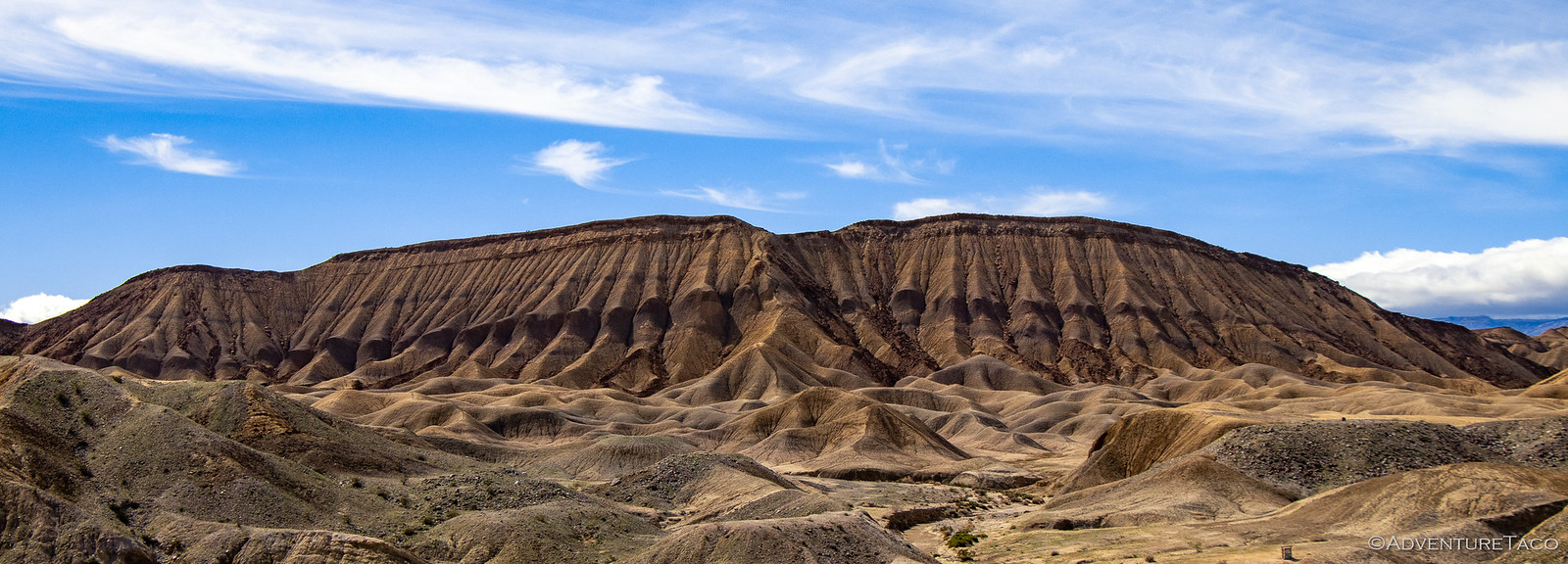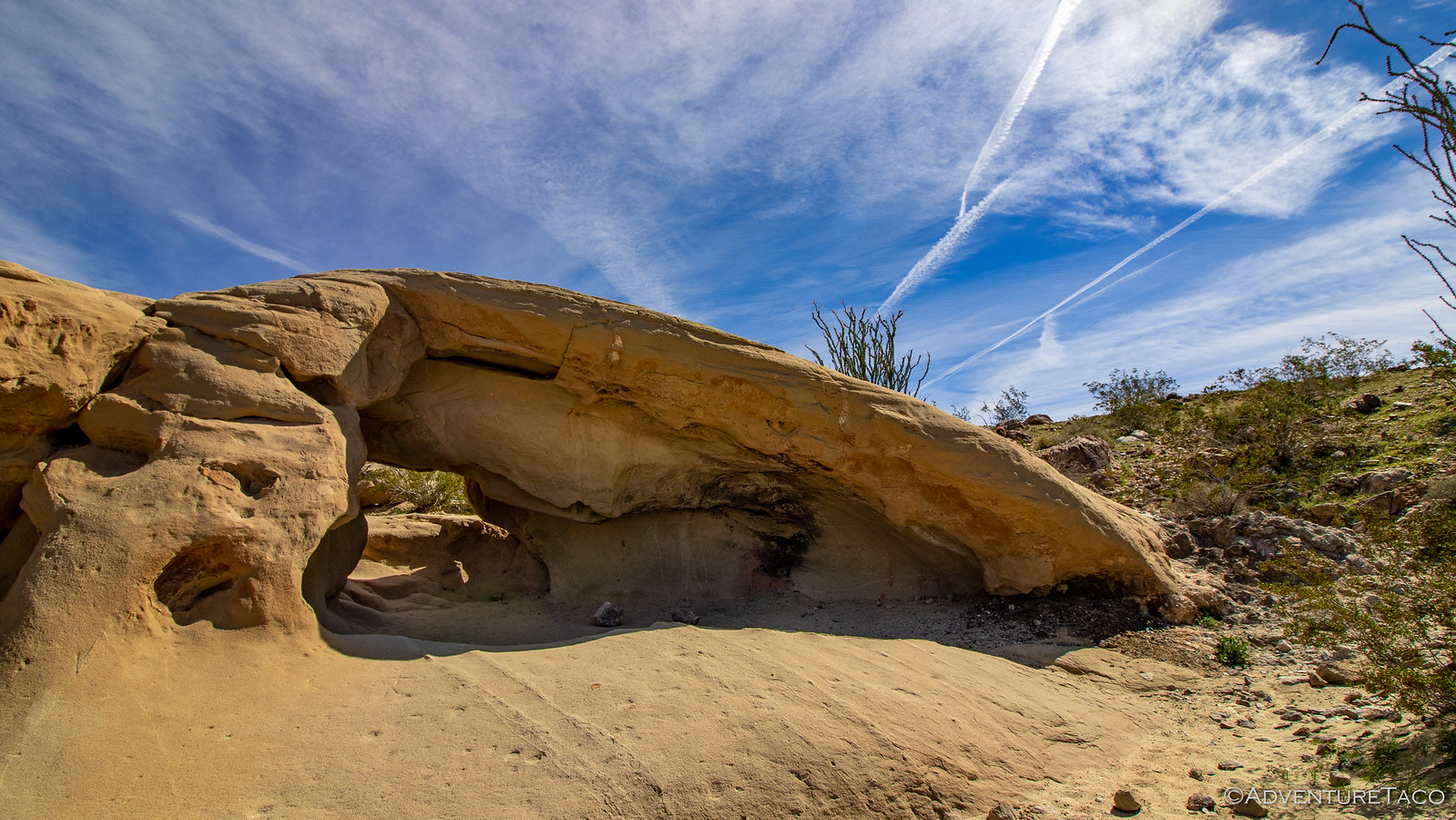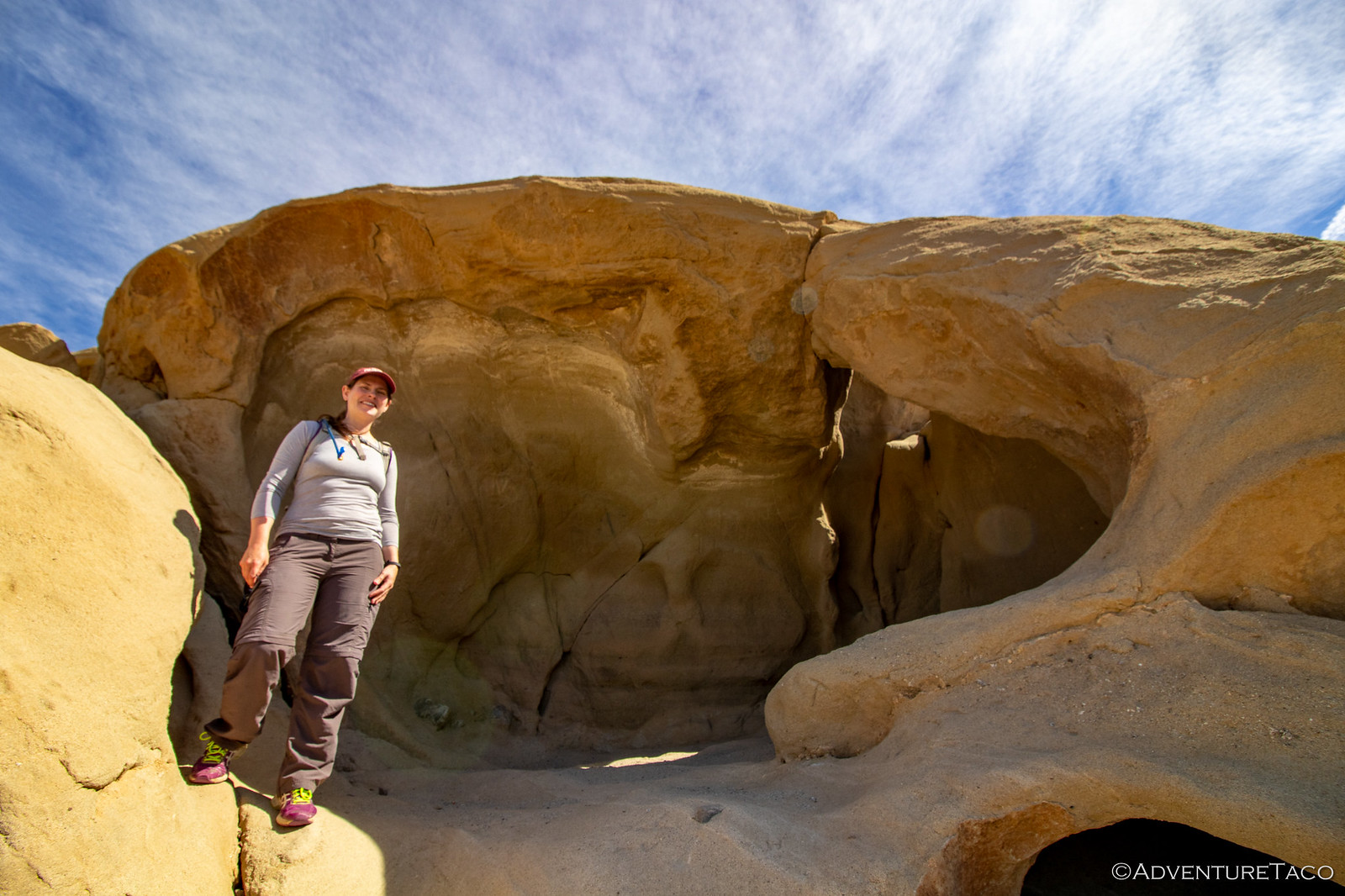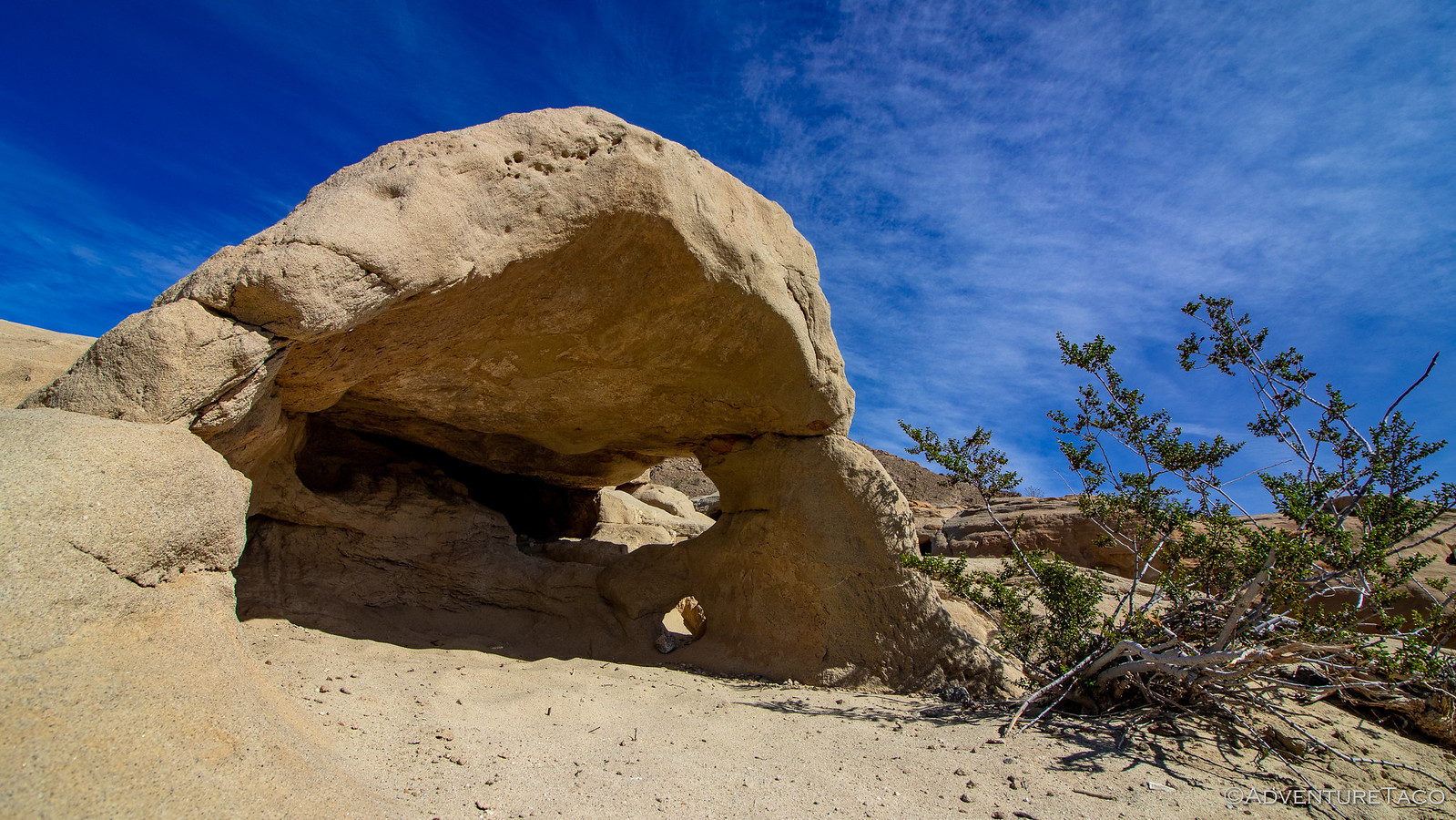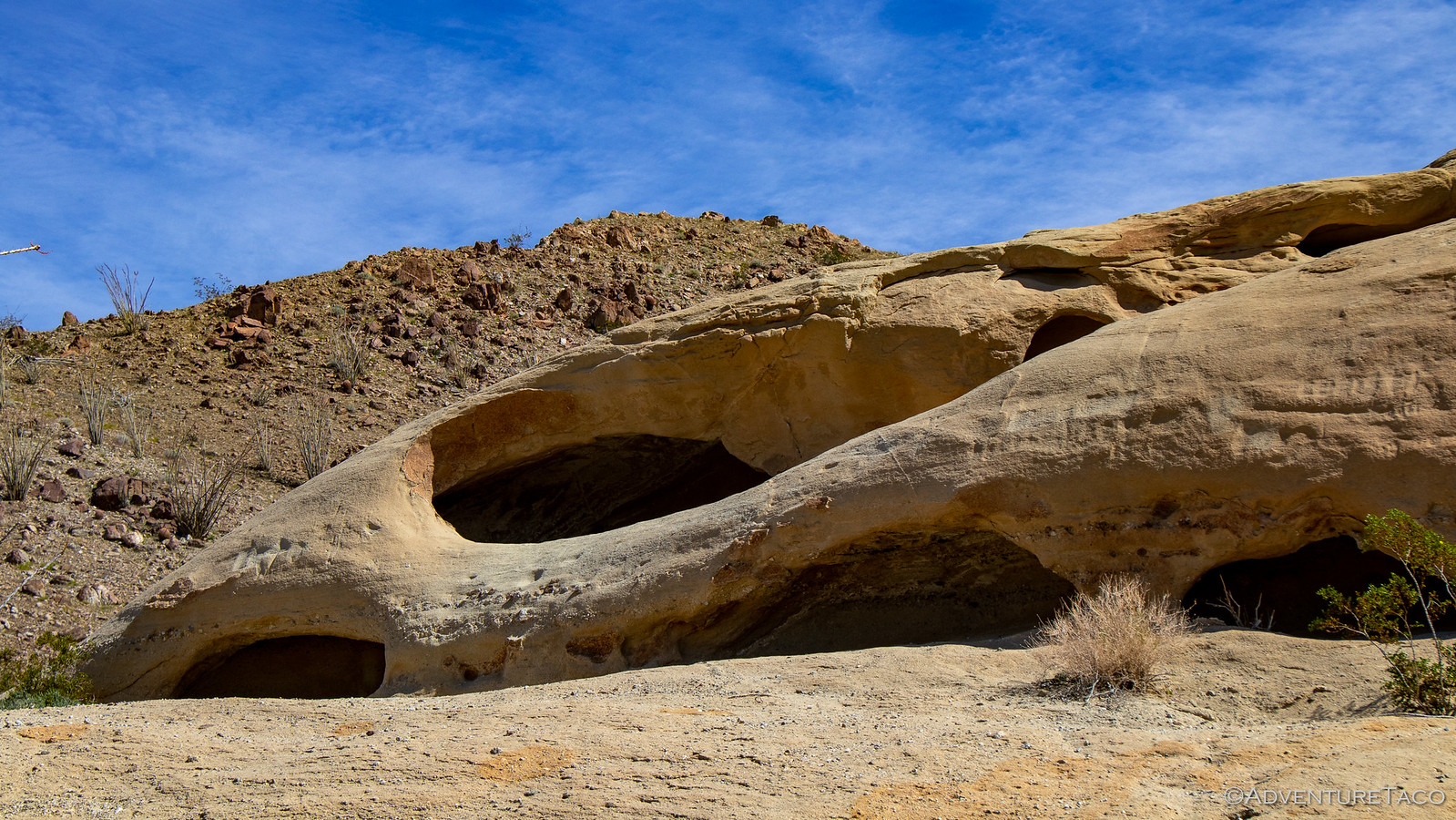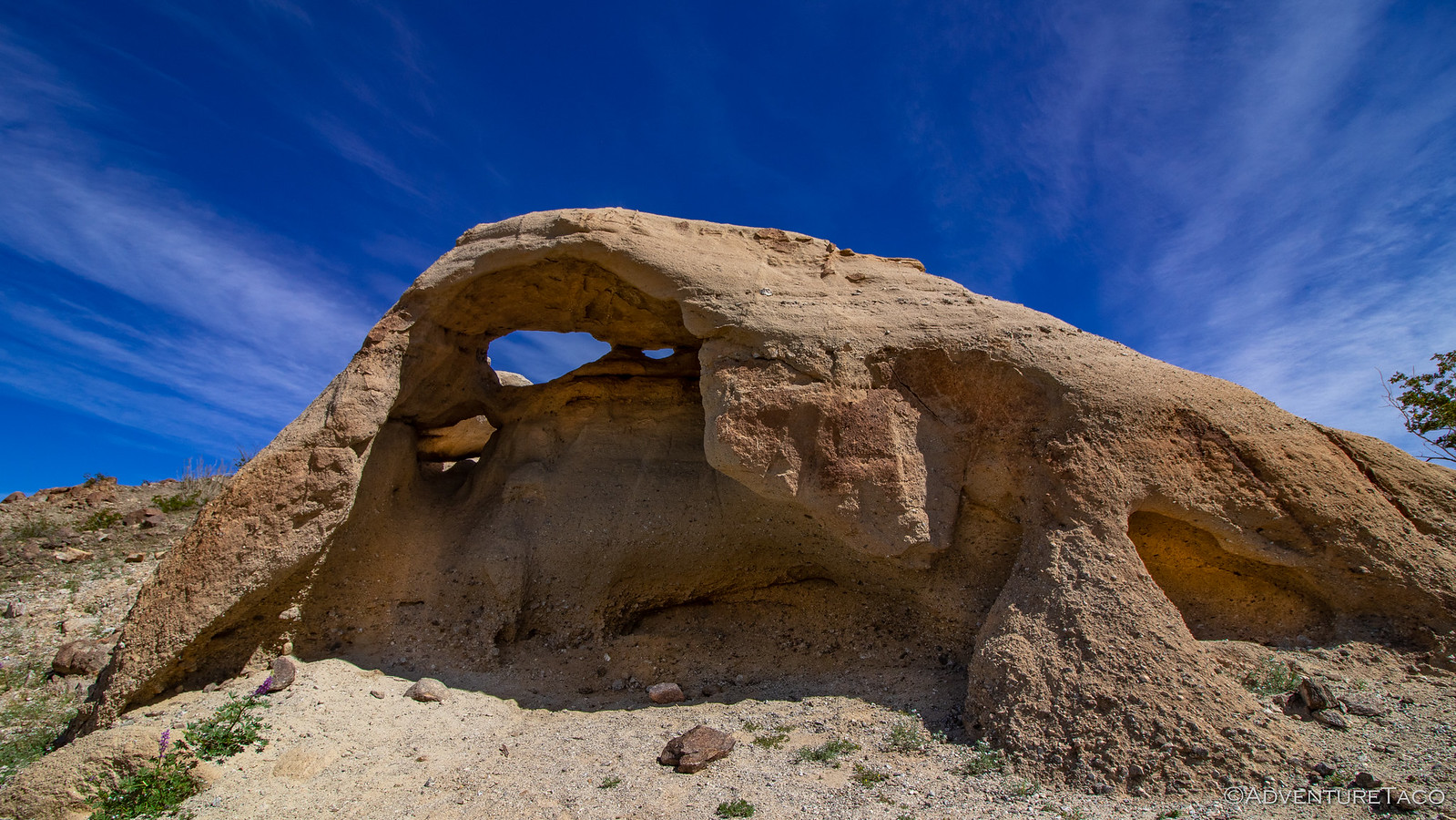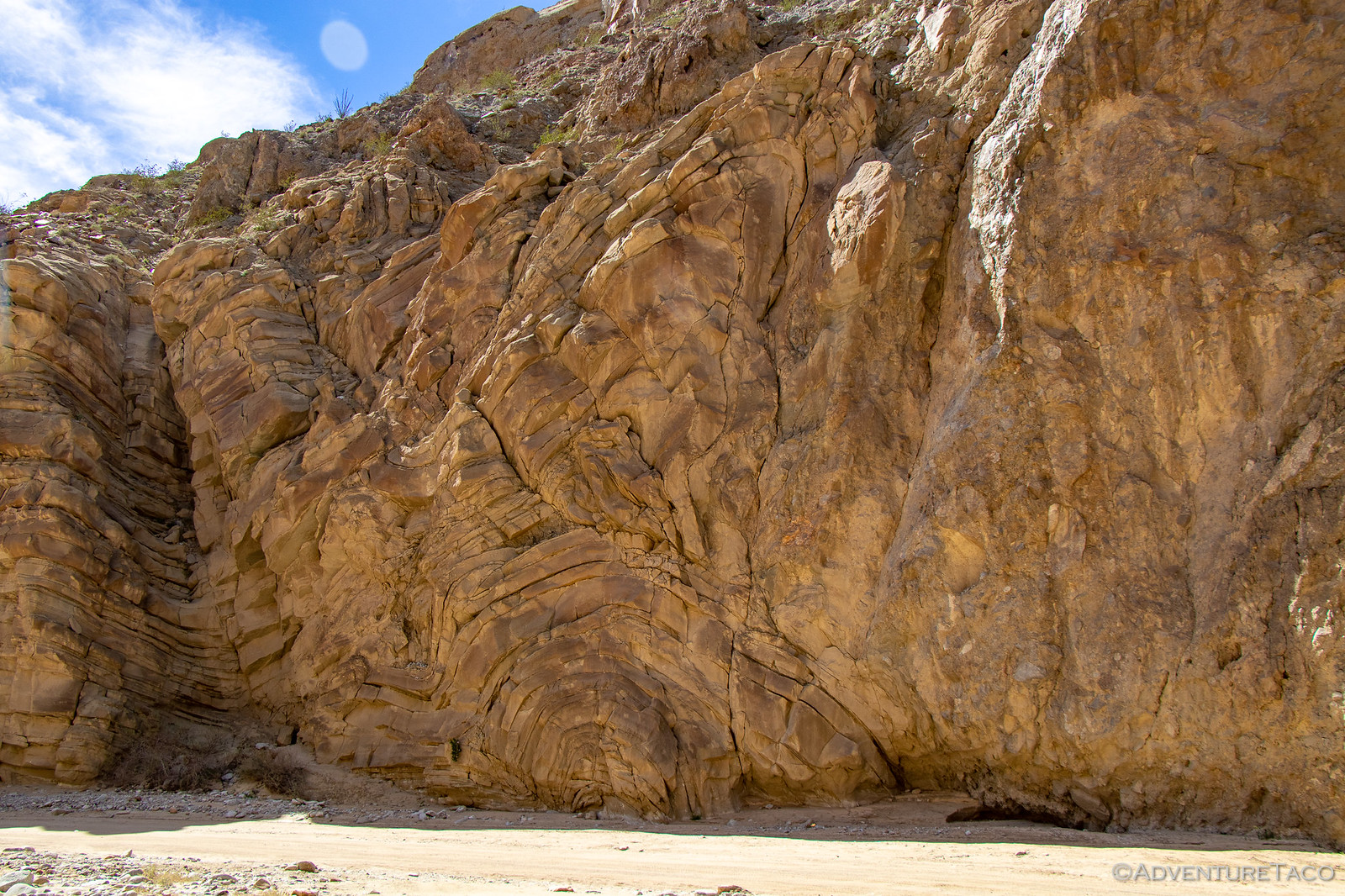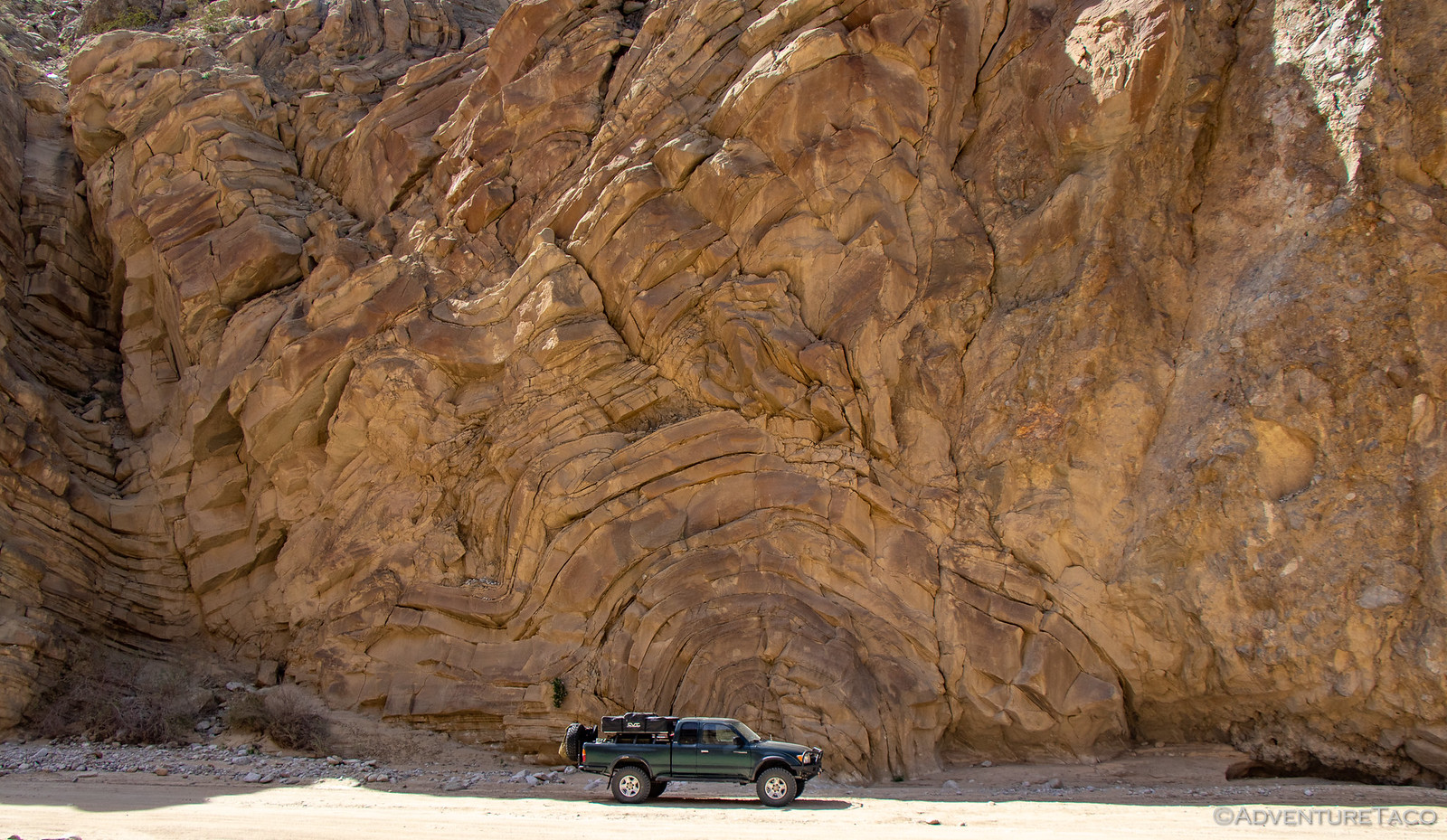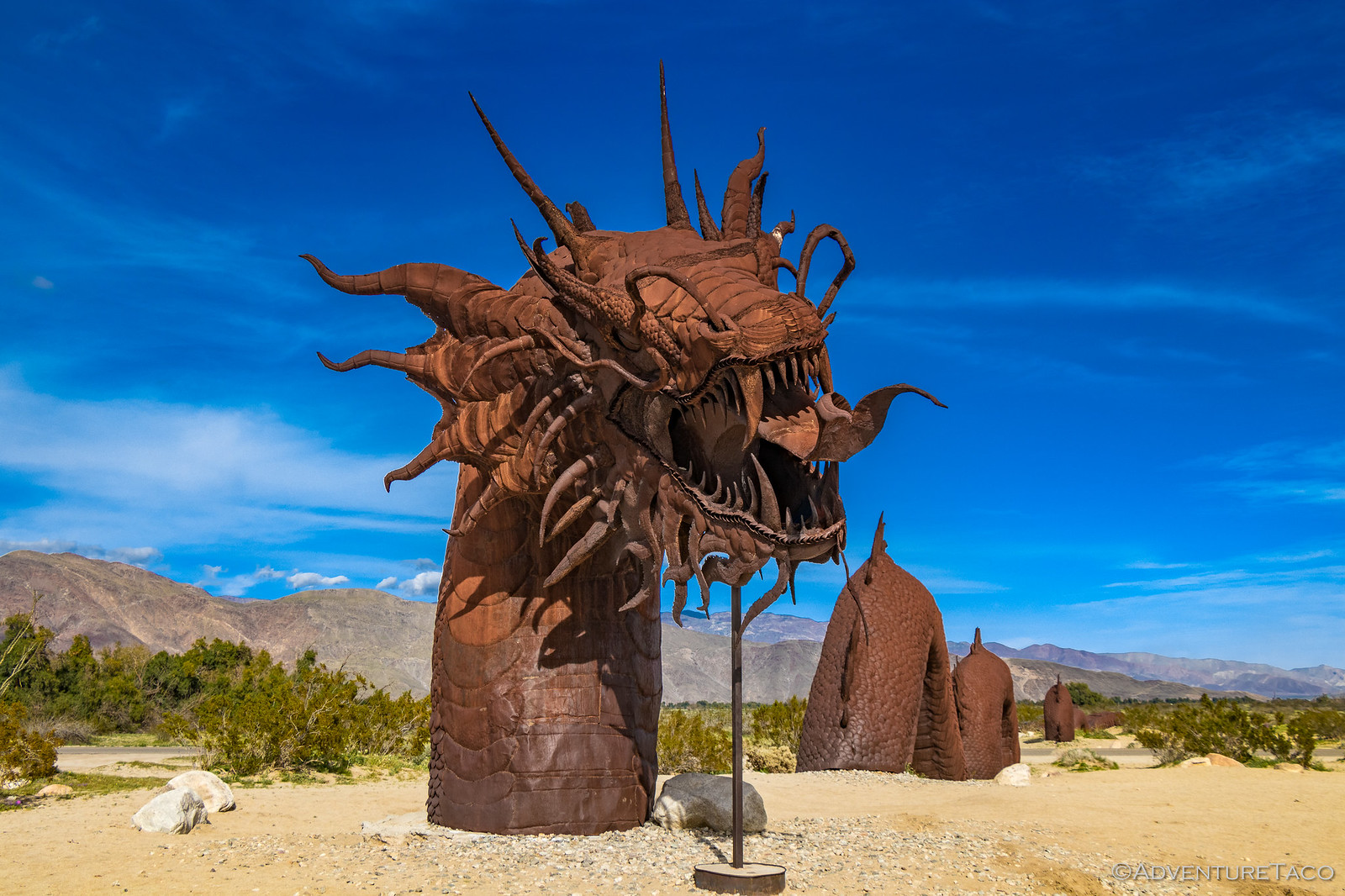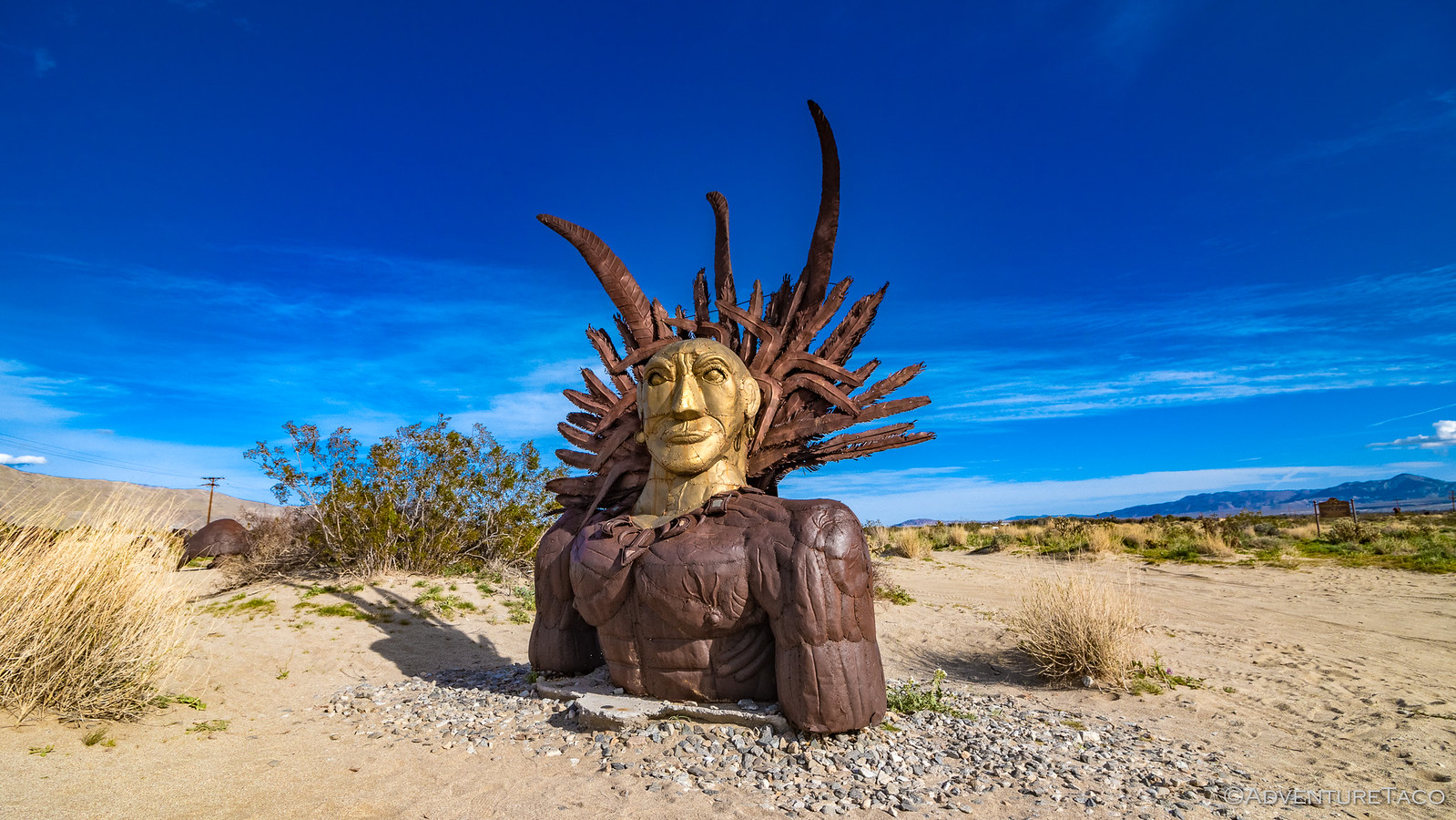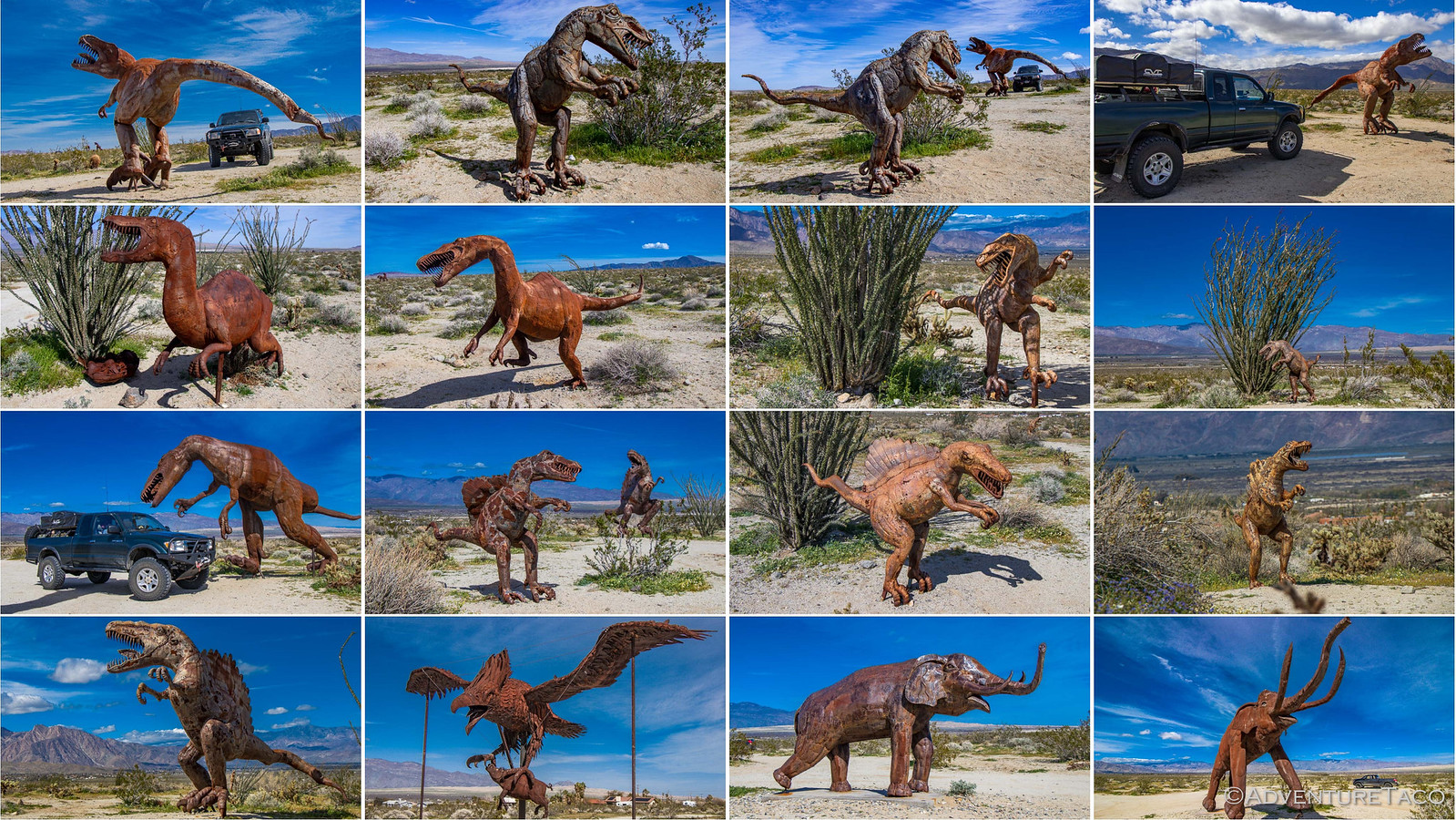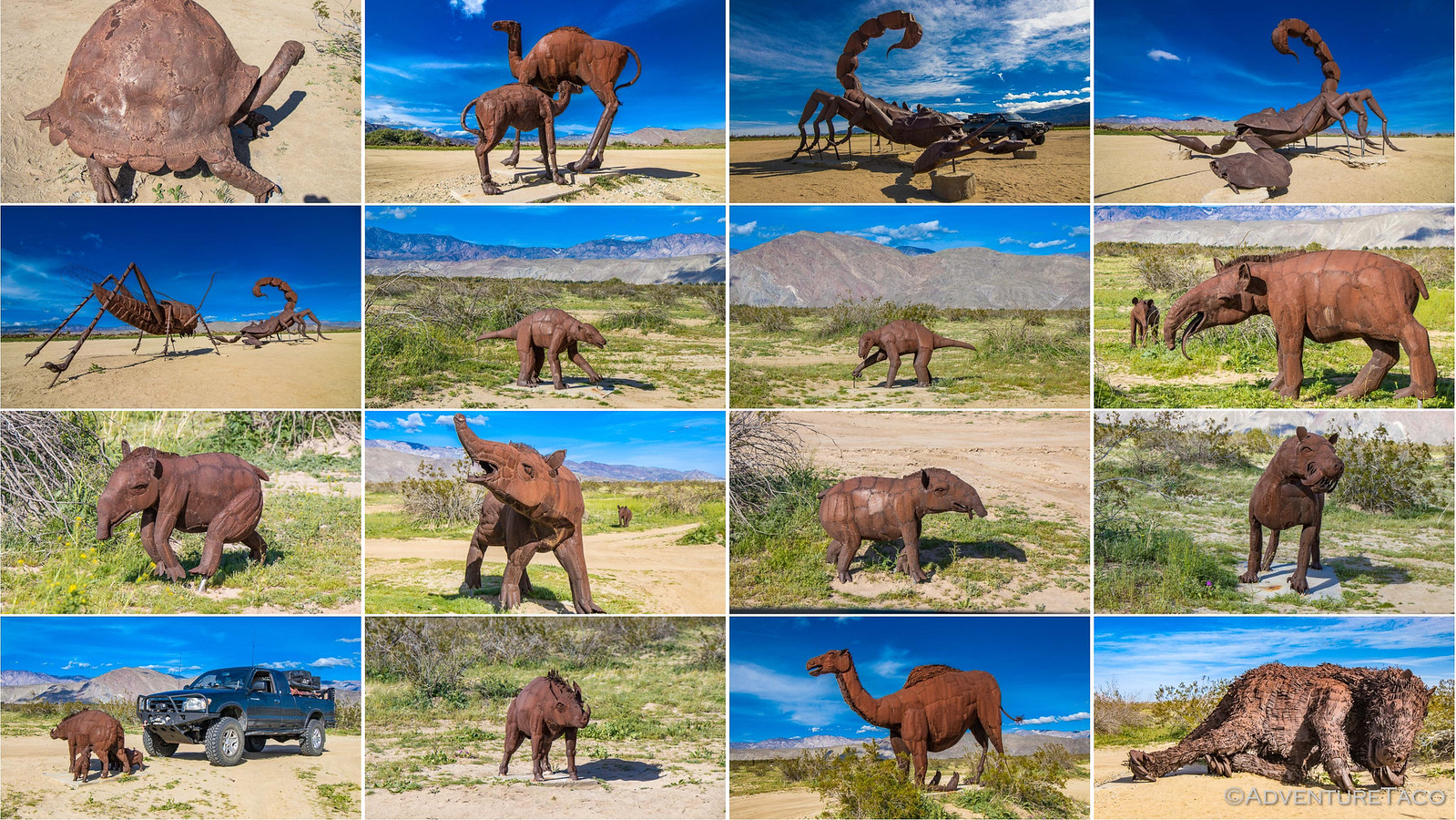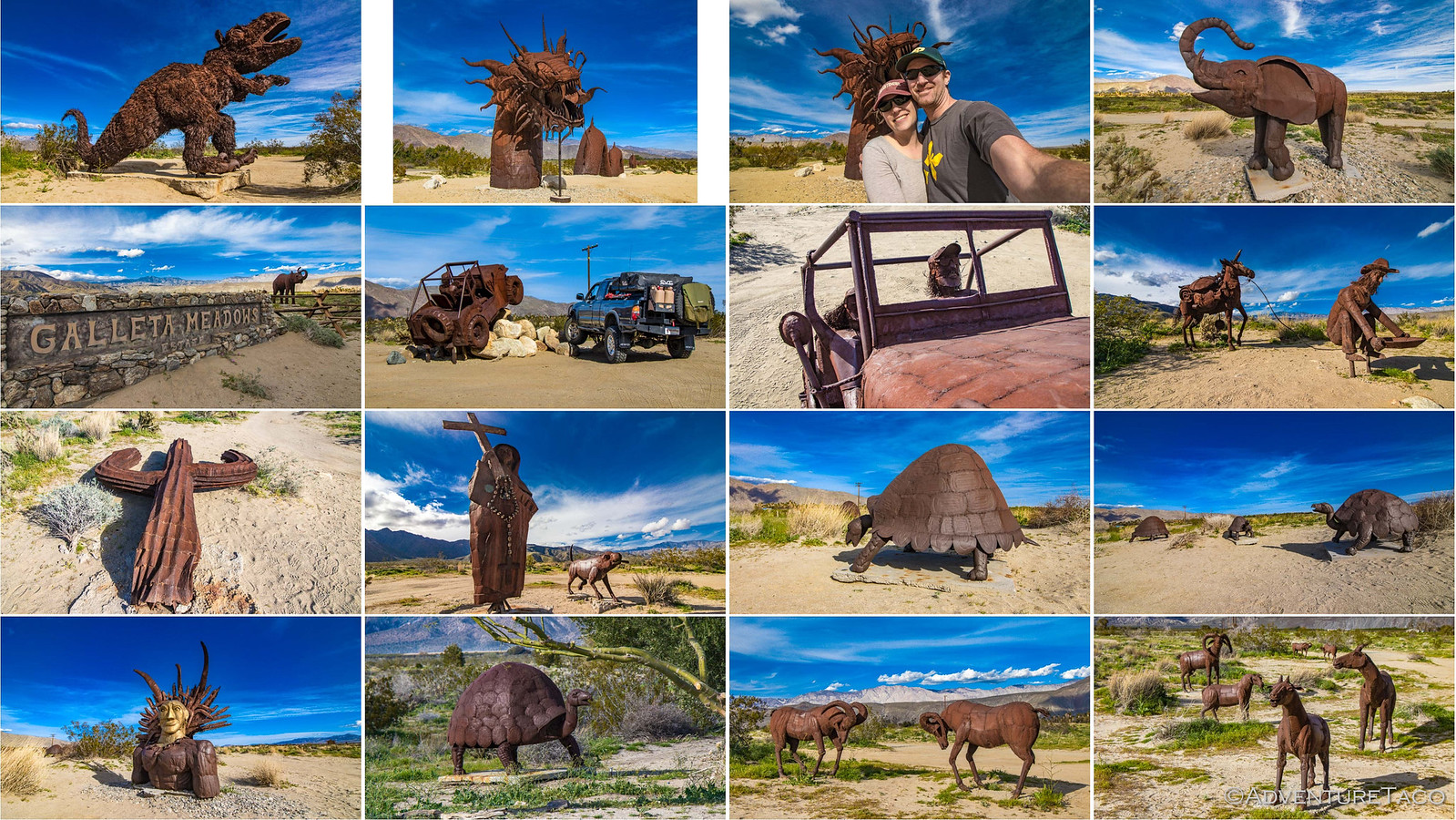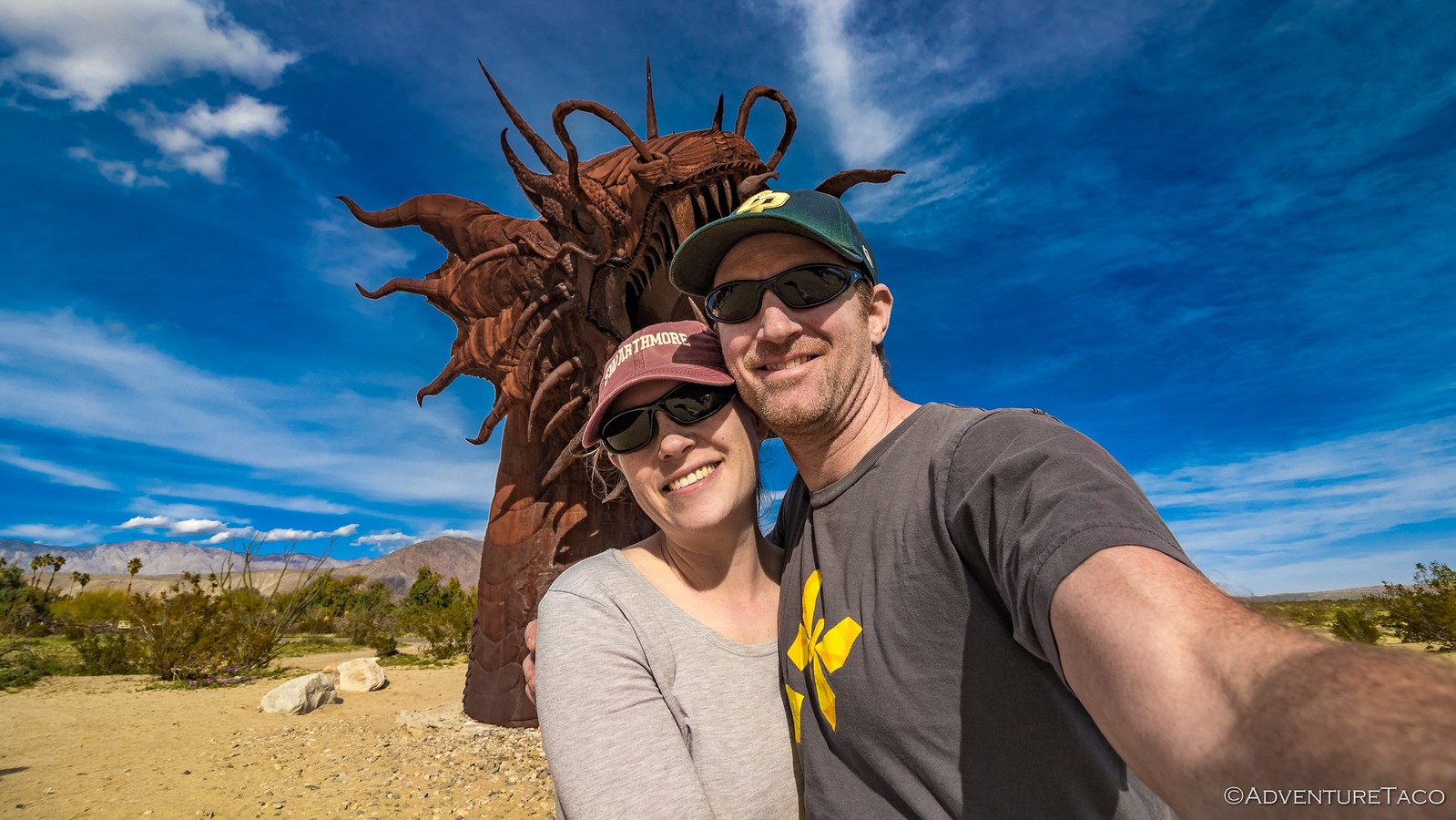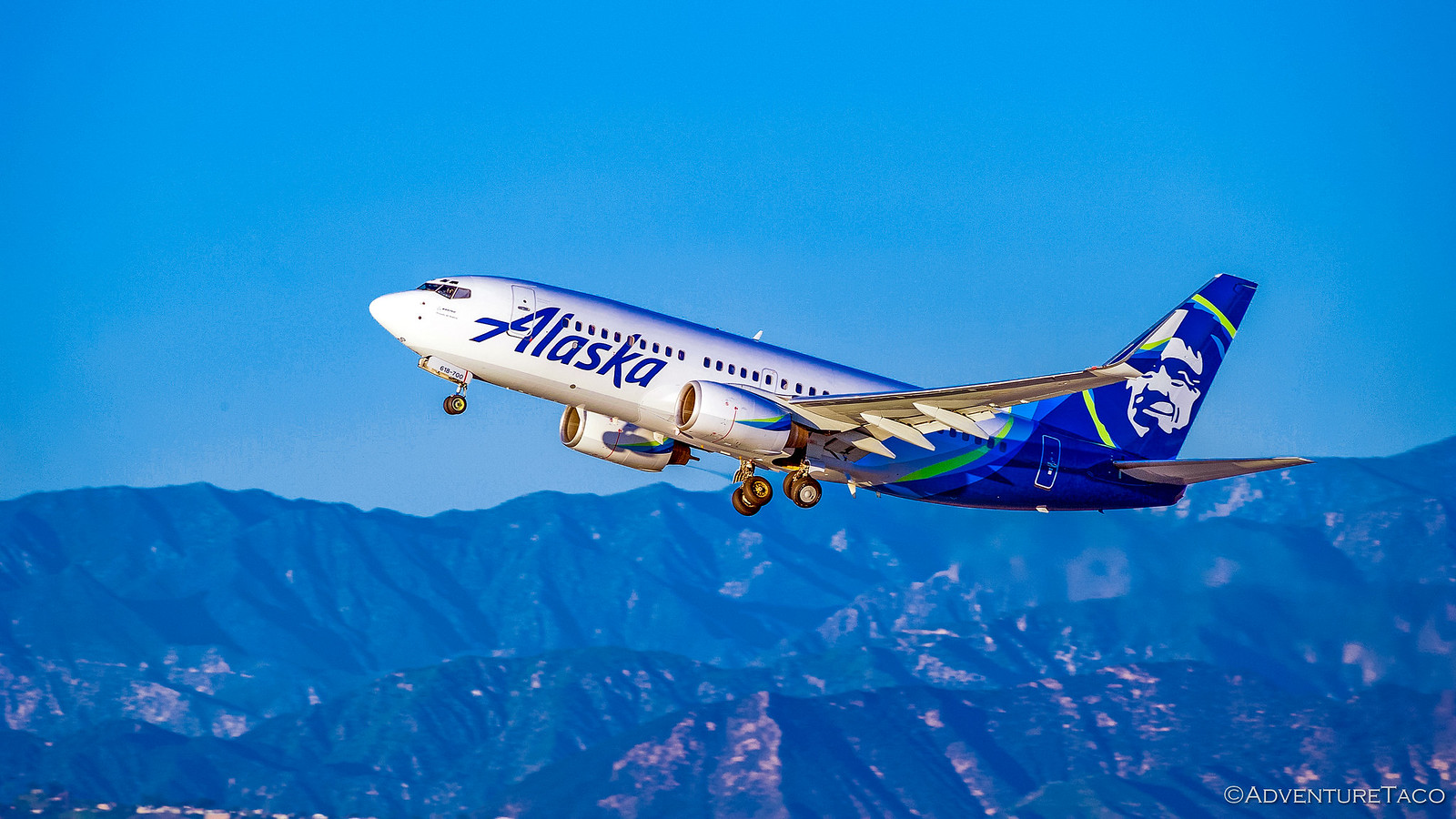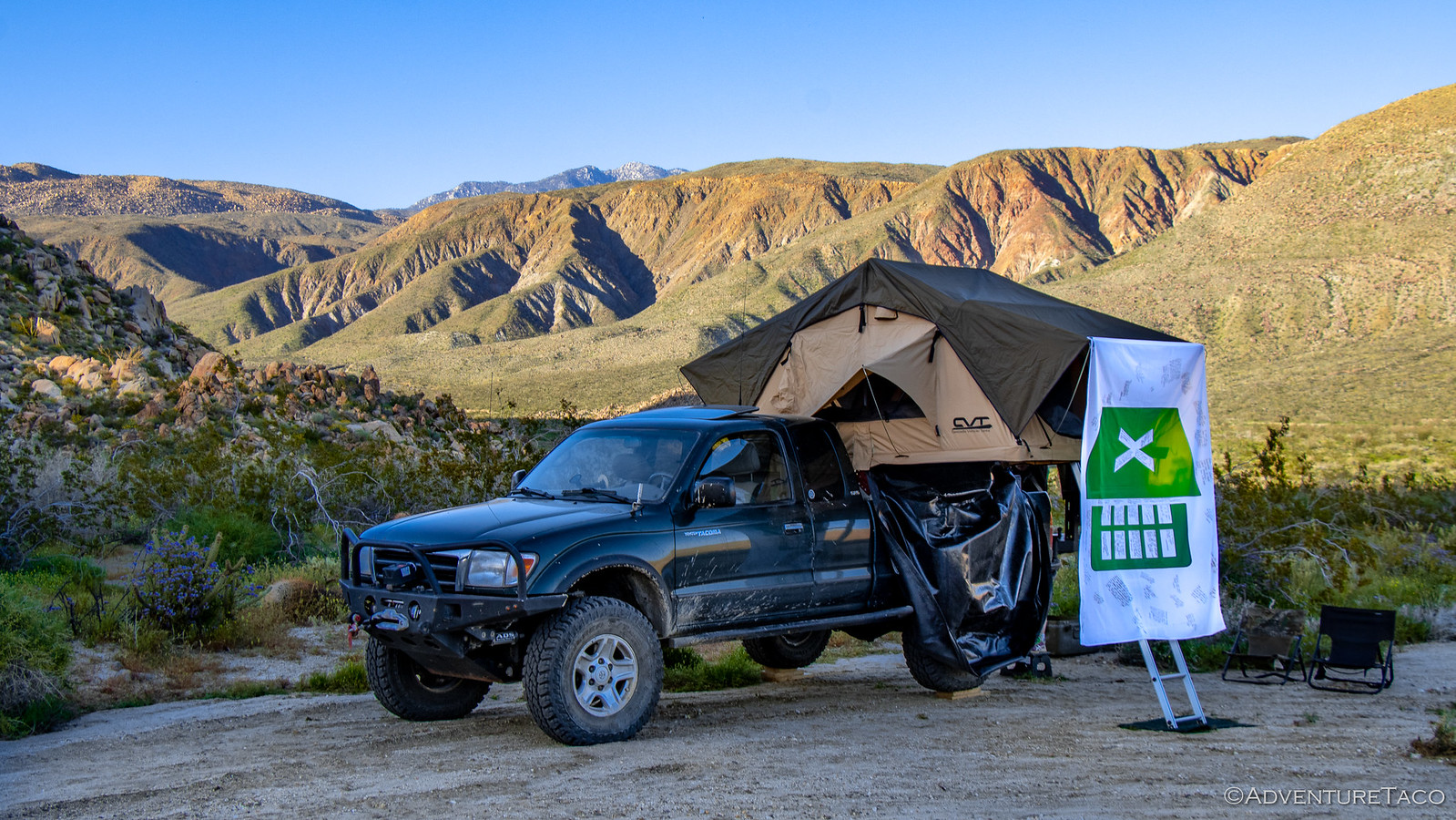March 3, 2019.
Having gone to bed with the wind howling, it only got worse as the night progressed. Having experienced these extremely strong winds in the CVT a few times now, and knowing that the ladder side of the tent was well-weighed down, I knew that the tent would be OK; my stress level lower than it had been the first couple times we'd been in this situation.
With earplugs in, we slept reasonably well through the night, though we were awoken for a few of the more violent gusts. In the morning, I'd tell @mrs.turbodb that a constant wind was better than one that started and stopped - the non-uniformity being the thing that caused our bodies to wake up.
With clear skies, I'd set my alarm for sunrise, and once again, we both got up to experience it the colorful illumination of the desert sky, starting with a sliver of moon just over the horizon.
Before long, oranges, pinks, and purples made themselves known against the blue morning sky, and eventually from our perch above camp, the sun started to creep down the canyon walls into Hapaha Flat.
It was still very windy, but having skipped dinner we were ready for some breakfast so we fought the wind as we poured our bowls of Cheerios and sprinkled fresh blueberries on top. We managed to keep most of the cereal in the bowl until an enormous gust of wind ripped through the bed of the truck, essentially vacuuming several dozen little O's out onto the desert floor.
Eat well desert rodents!
We got the milk poured and huddled behind a small-cabin-sized-rock to wolf down breakfast before packing up everything in the bed of the truck and getting the tent put away - no small feat with the gusting wind. Then, we had a decision to make - the evening before we'd discovered a pair of Agaves just about to bloom - their stalks climbing 10-feet into the air, their flowers just starting to open. I'd tried to snap a photo just as the sun was hitting the tops of these beauties, but had been 30-seconds or so late.
I really wanted to stick around to get a photo of them when the light hit this morning. And as it turned out, that was just fine with @mrs.turbodb - any excuse to hang around investigating the flowers, a big plus in her book. We had what turned out to be about 20 minutes to wait, so we took in the local flora.
A couple of blooming yucca.
A chollo cactus with a bird's nest.
An unknown cactus with a crown of purple and yellow, and a barrel cactus, bright yellow in the morning sun.
An agave sending up it's stalk - unaware that upon its completion of flowering, the entire plant will die.
And, chollos shedding what I deemed "chollo balls" everywhere. As it turns out, everyone tries picking up one of these balls only once. Except for me - I tried twice. Overachiever or slow learner? 
And then the sun peaked over the hilltop and just kissed the tops of the agaves we'd been waiting for. With the blue sky, clouds, and hills in the background, I thought it was worth it.
Oh, and just then, the wind stopped. It didn't taper off slowly or gust a few final times - it just stopped. It wasn't the best timing in the world - I mean, it could have stopped 9-hours earlier and we'd have been a lot happier - but we weren't complaining. I changed into shorts and we lathered on the sunscreen, and we hopped in the truck and started down Fish Creek wash just before 8:00am, excited to see what the day had in store - starting with some amazing alluvial fanglomerate.
Having driven much of it the day before, we made quick work of Fish Creek, excited to see what lay ahead on Split Mountain Road, and whatever we'd choose to explore after that. And, it wasn't long before we ran into our first opportunity to get out and explore.
We didn't know what exactly we'd spotted since they were nearly a quarter mile off the road, but as we got closer, I realized that these were some mud caves! We'd not expected them here at all - though there was another trail where we planned to see some - and so we hopped around exploring for a good 15 minutes. Mud caves - as far as I can tell - are formed when water starts seeping down into a porous badland hill (for lack of a better term), and then exits somewhere lower down the hill - sometimes even on the opposite side of the hill. Over time, water flowing through this path excavates the dirt inside and it becomes a cave.
The "problem" is that you never really know where the excavations have happened underground - so walking around near any visible mud cave means that there's a reasonable chance the the ground under you is hollow! I ran into this first hand as I nearly stepped on a few rocks embedded in the mud, before noticing that there was darkness below them - the rocks the only thing between me and a 8-foot drop into a mud cave.
Counting ourselves lucky to have found the mud caves and to have explored the area without incident, we made our way back to the truck and continued down the wash in our normal stop-and-go manner. With a beautiful morning like this, how could we not?
At points in the wash, the walls towered high - their grandness hard to capture without some point of reference. Our truck - dwarfed - perfect for that task.
And it was shortly after the high-towering walls that our day slowed down dramatically. It was still early at this point, mind you - around 9:30am - but we'd make it less than a couple miles down the road by 1:30pm, all the fault of cool things to explore. Life could be worse, I guess. 
First up were the Elephant Knees. This amazing formation was created over millions of years - its sedimentary layers deposited as part of the Sea of Cortez (Gulf of California) and prehistoric Lake Cahuilla (the precursor to the Salton Sea). And, like any sea-based sedimentary formation, the Elephant Knees are littered with fossils. From corals, clams, crabs, and shrimp to sharks, rays, and baleen whale - numerous fossils can be found in vast quantities in this area. In fact, vast quantities of oyster shells are what make up the slightly harder layers of sediment - slower to erode as the soft mud above and below wash away, these layers have become the "knees" of the formation.
Next - not 300 yards down the wash - were the dinosaur tracks and some more petroglyphs. Always excited for dinosaur tracks, this was something I'd flagged early on in my research of Anza-Borrego - so you can imagine my surprise when @mrs.turbodb read me the following description out of her book:
For many years, the peculiar erosional patterns found in a canyon up fish Creek Wash, south of Split Mountain, were thought to be dinosaur tracks because of the definite uniform shape. Some of the circular shapes resemble imprints of what could be an elephant. Others could be fashioned into claw-marked track. The sedimentary strata of the region, however, date to the Miocene or Pliocene eras, long after the dinosaurs became extinct.
Former Ranger George Leetch often perpetuated the notion of the Dinosaur Tracks, even though he knew they weren't. According to Resource Ecologist Mark Jorgensen, "every ranger since George has tried to dispel the myth. Apparently it won't go away!"
Geologists say the tracks are the result of erosive forces upon the concretions in the sandstone...Anza-Borrego A to Z: People, Places, and Things
Well then. I present you with FAKE dinosaur tracks. 
And while I'm at it, we were quite sure that these were also FAKE petroglyphs - or rather, they were younger than we are.
Despite the let-down of reality, it was still fun exploring around for to see what could have been interpreted as dino tracks, and we didn't feel cheated at all - quite the contrary in fact - we had a great time making up stories and laughing about the whole situation for a good 20-minutes or so!
As we headed back to the truck, we saw a couple 3rd gen Tacoma's coming up the wash. We could tell these guys were serious by the number of stickers on their trucks, and the plethora of #hashtags left in their wake.
A second good giggle behind us, we piled back into the truck and headed out a little too quickly - realizing only after we'd moved another 300 yards down the wash that we'd already passed out next adventure - a relatively short (2 mile) hike to the Wind Caves.
Initially headed up a steep grade taking us to the top of the walls of the wash, we were glad for the cooler, early-spring weather - making this trek in the heat of summer would have been much less fun. Of course, at the top of the grade, the views were spectacular. Not only could we see the entire landscape around us, but we got a splendiforous view of the Elephant Knees once again.
Not long after that, we arrived at the Wind Caves. There were tons of caves, carved out by the same winds we'd experienced the previous night over thousands of years - all there for us to explore.
We wove our way in and out of the caves, some large enough to live in, others perfect for storing your tennis balls. And up and down various levels - the entire formation seemingly constructed as a multi-layered city, "a Flinstone village," said @mrs.turbodb.
We could have stayed here hours longer, if we were to explore all of the caves - and beyond, the trail continuing up into the badlands. But by this time we were already starting to get a little hungry - our early start catching up with our bellies - and so we headed down through the lower villiage levels and back to the truck.
Luckily for our tummies, there was only one more stop before the end of Split Mountain Road - an amazing fold in the canyon wall that caught both of our eye as we drove past. This fold was created in just a few seconds, when a fast-moving landslide crashed into the soft sea bottom of the early Gulf of California. Layers of sea sediments, flat and horizontal one minute were plowed into irregular vertical folds moments later.
Our curiosities satisfied Now at the entrance to the wash, we gave in to our hunger. Having skipped dinner the night before, and this being our last on-the-trail meal for this segment of the trip, we had sandwiches to die for. Twice the turkey, twice the salami, twice the lettuce, and all the leftover avocado we could squeeze between the bread. A few potato chips and a view and we were in sandwich heaven.
As it had been previous days, lunch was a leisurely affair - we probably hung out for an hour or so, just enjoying the weather and watching the few folks headed in or out of the wash pass us in their wide spectrum of vehicles. Eventually though we got everything packed up and back underway - our destination now a bit different than the previous: we were headed into town.
See, as I mentioned right at the beginning of this story, this was going to be a two-part trip. The halves would be separated by 10 days, during which time we'd leave the truck in Borrego Springs and fly back home to take care of life. By flying between the two halves rather than driving, we'd save two full days, and the price (flight vs. fuel) was roughly the same - so it was a no-brainer in our book!
But first, we had one more thing to see - the Galleta Meadows Metal Sculptures. Spread around Borrego Springs, these enormous pieces of art were created by Ricardo Breceda, based in Perris, California, for Dennis Avery (of Avery labels) who envisioned the idea of free-standing sculptures of creatures who once roamed the Borrego Valley.
It's since evolved to be much more than that - the life-size or larger sculptures now including dinosaurs, camels, turtles, mammoths, zebras, saber-tooth tigers, a scorpion, a gold miner, a dragon serpent, and even an off-roading Jeep!
We tried to make it to all the sculptures, though I'm sure we missed a few here and there - apparently there are over 129 of these puppies scattered throughout the town. Enough at any rate that by the end, I mentioned to @mrs.turbodb that, "It would have been cooler if whoever did this knew when to stop. Ten or so amazing sculptures would have been a way cooler experience."
Still, I think we were both glad to have gotten to see this amazing art - it's not every day that you get to stand in front of a dragon in the desert.
From there, we made for town, dinner, and a shower before getting a good night sleep in a comfy bed and catching a flight out of Palm Springs the following morning. And, as we cruised at 35,000-feet, we were already talking about what we wanted to do on our return - the list, we knew, longer than we could accomplish in a single return trip!
